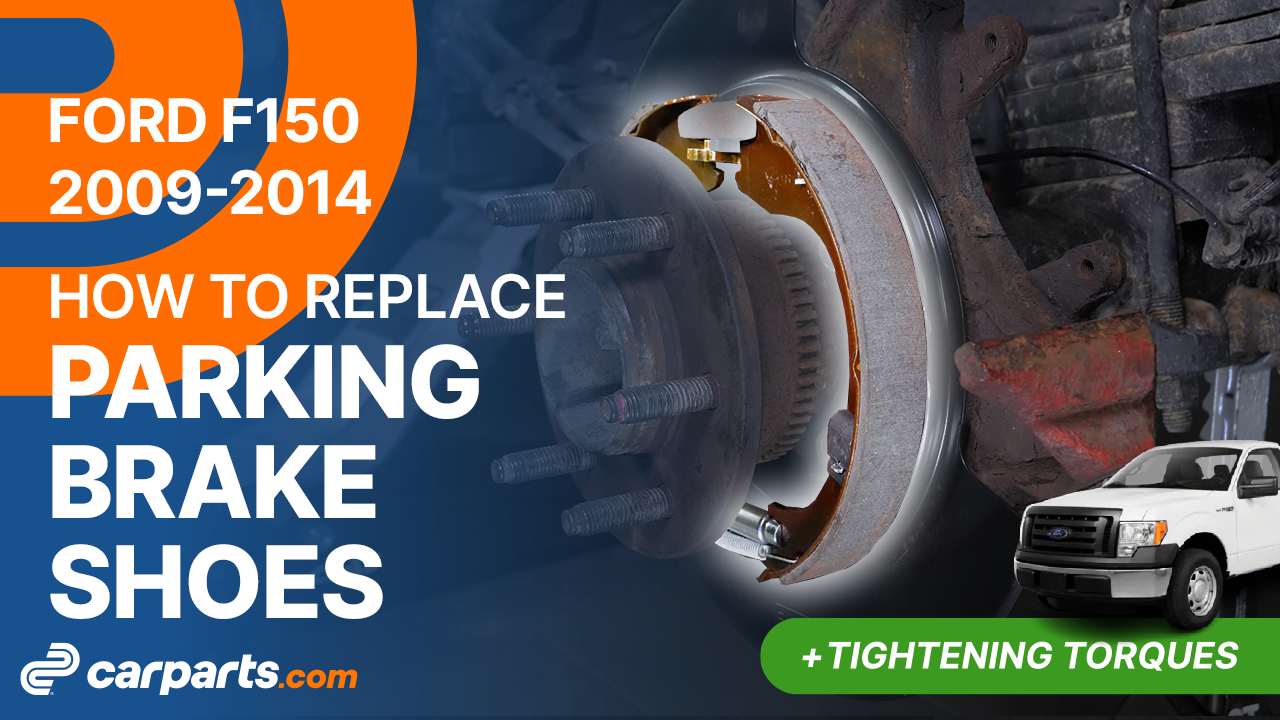
How to replace the parking brake shoes 2009-2014 Ford F-150
To replace the parking brake shoes on your F-150 It’s easy. You will need to open the hood, remove the brake shoes, install the new drum brakes as well as carry out a few other steps. You can follow this tutorial of 9 chapters in 70 minutes. Take your flat head screwdriver and your wheel lug wrench and let’s get started!
Duration
70 minutes
Number of steps
9
Difficulty out of 5
4
Average savings
$100
Parts You Will Need
Tools You Will Need
Step-by-Step Installation
Chapter 1:
Open the hood
Step 1/3
Turn your engine off and set the parking brake.
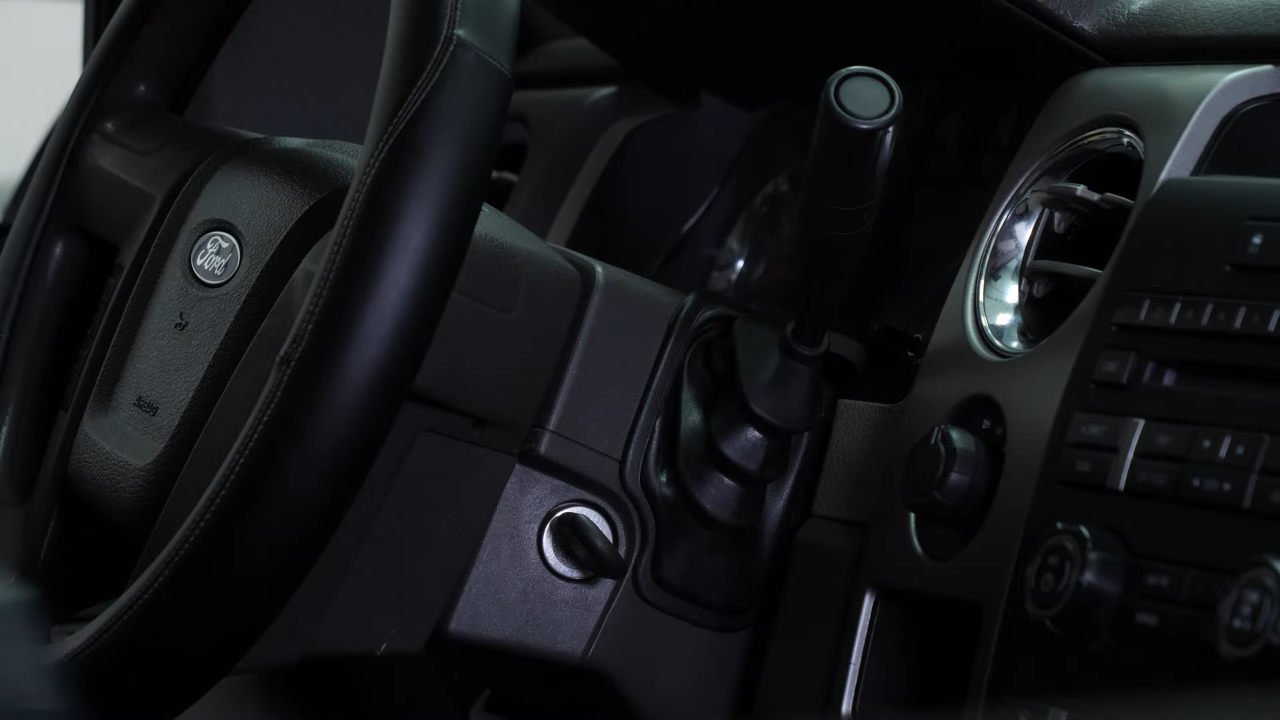
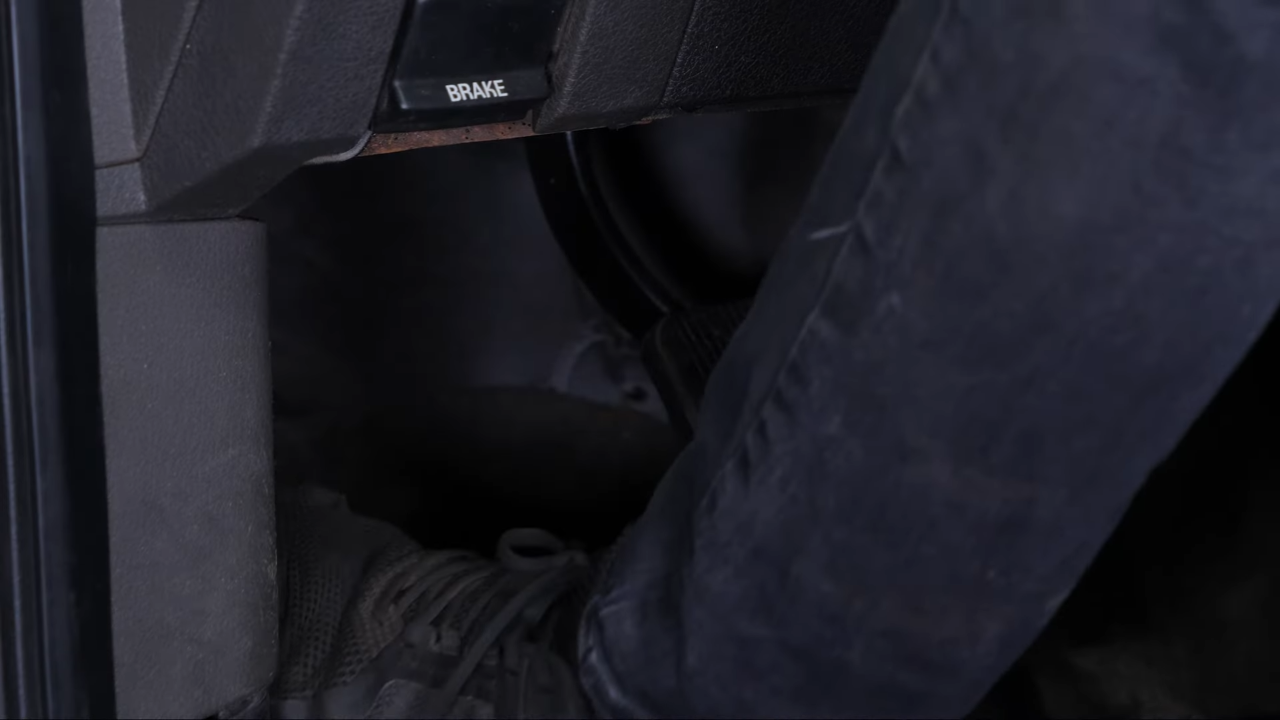
Chapter 1:
Step 2/3
Pull on the hood release handle and open the hood.
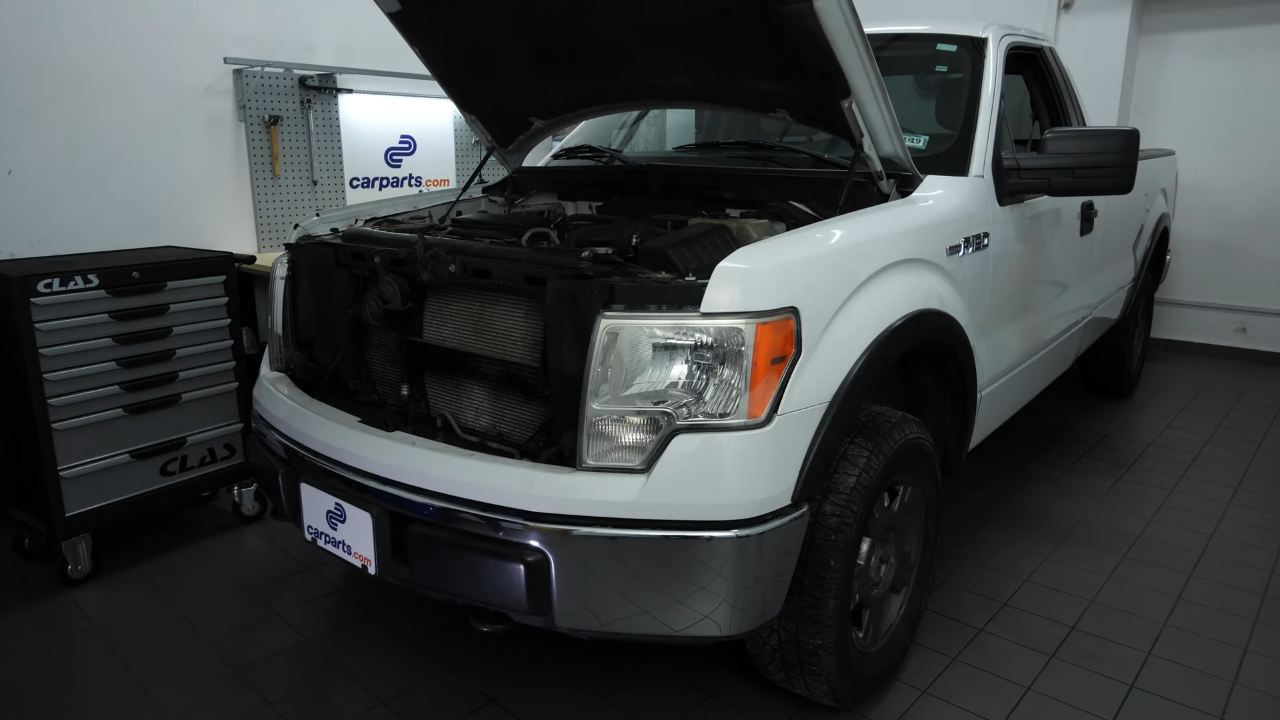
Chapter 1:
Step 3/3
Open the brake fluid reservoir.
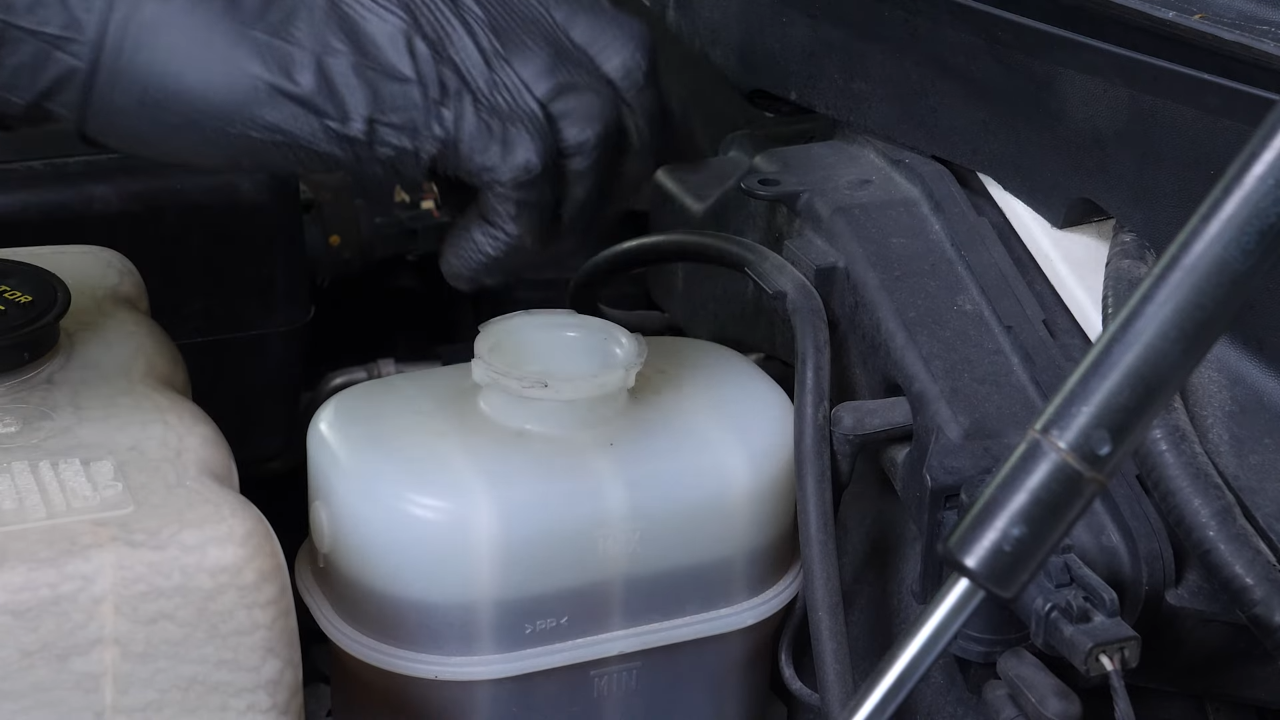
Chapter 2:
Lift the vehicle
Step 1/6
Loosen the wheel lug nuts on the rear wheels.
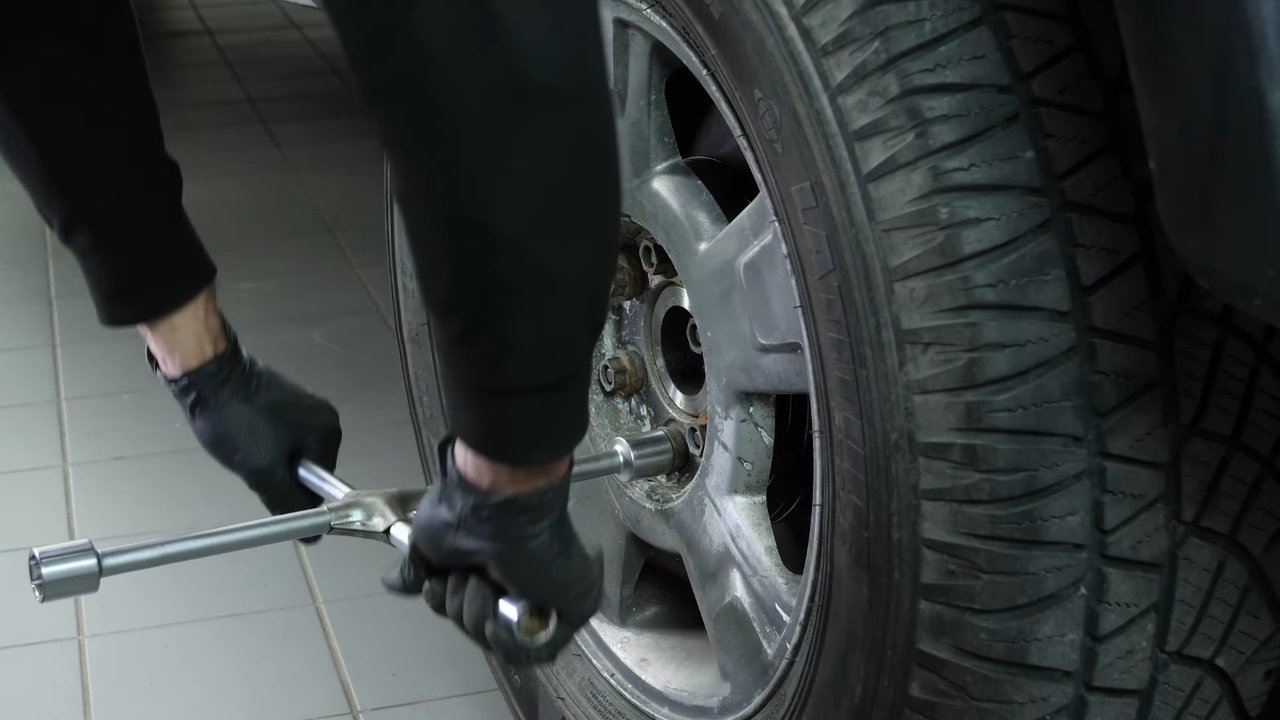
Chapter 2:
Step 2/6
Lift the rear of your vehicle.
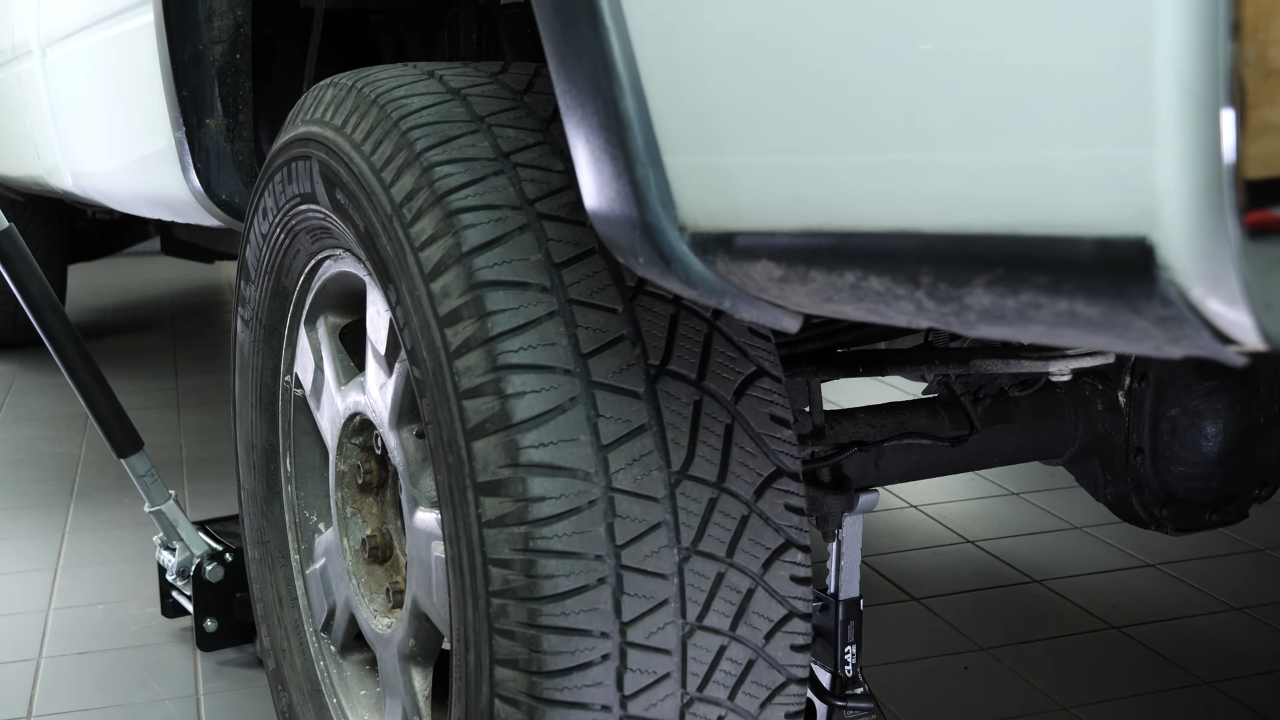
Chapter 2:
Step 3/6
We strongly suggest watching our video on ‘How to jack your Ford F-150 safely” before carrying out this step.
Chapter 2:
Step 4/6
Place the vehicle on the jack stands.
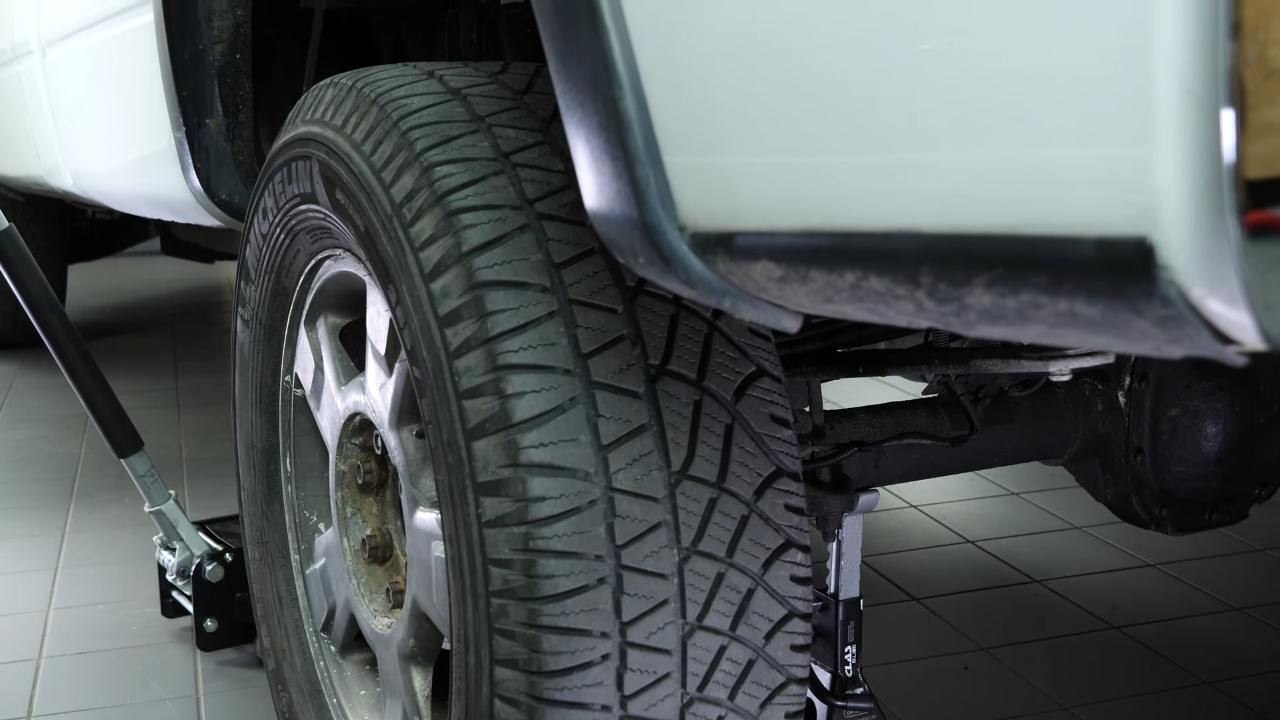
Chapter 2:
Step 5/6
In order to change the parking brake shoes on your vehicle, you will need to take off the wheels to have full access.
Chapter 2:
Step 6/6
Don’t forget to put the wheels under the vehicle!

Chapter 3:
Remove the drum brakes
Step 1/7
Before you change the parking brake shoes, we recommend watching our video : “How to replace the Rear Brakes 09-14 Ford F150”.
Chapter 3:
Step 2/7
We show you how to remove the brake caliper, brake pads, and brake discs if you decide to change them too, as we did in the video.
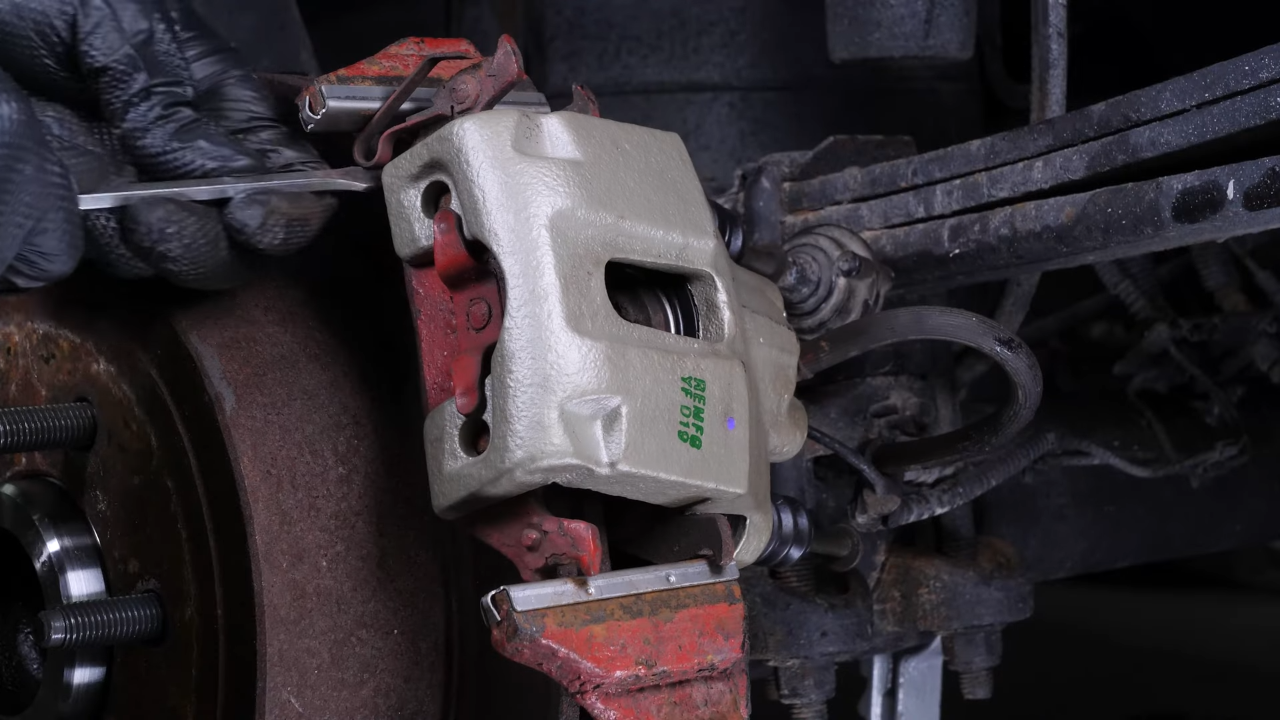
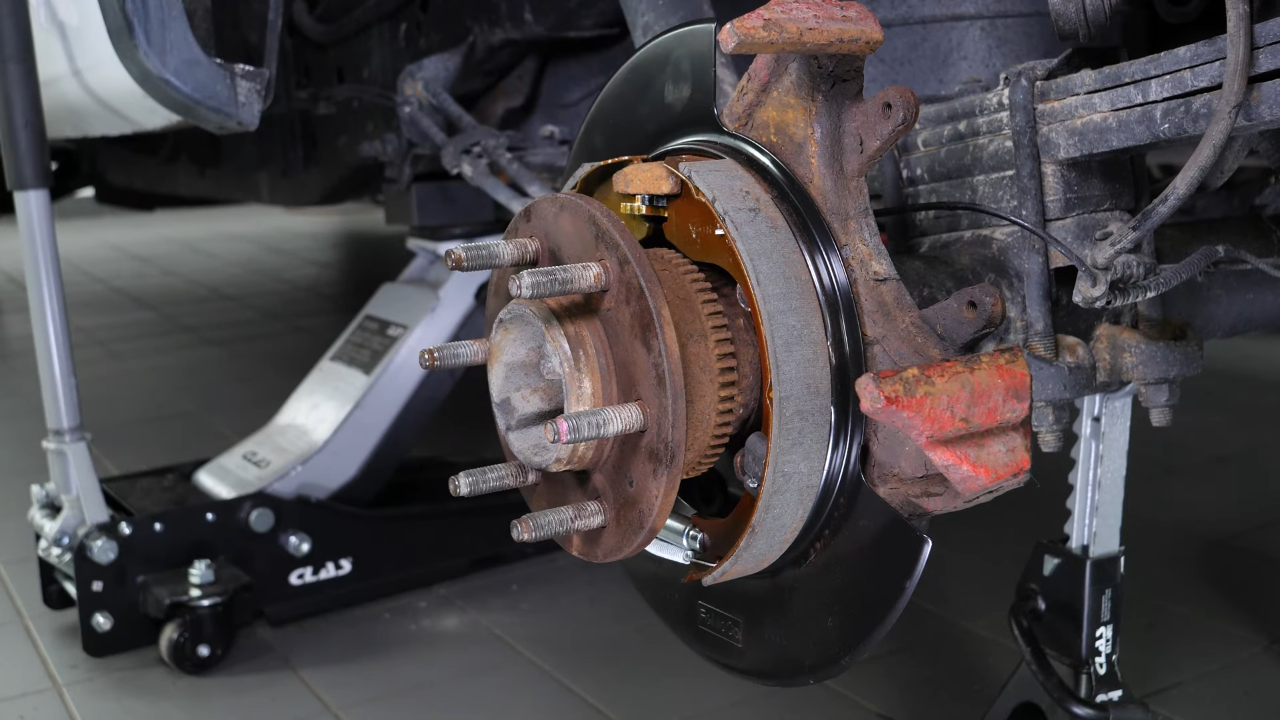
Chapter 3:
Step 3/7
It is now necessary to release the parking brake in order to clear the grip of the drum brake shoes on the disc.
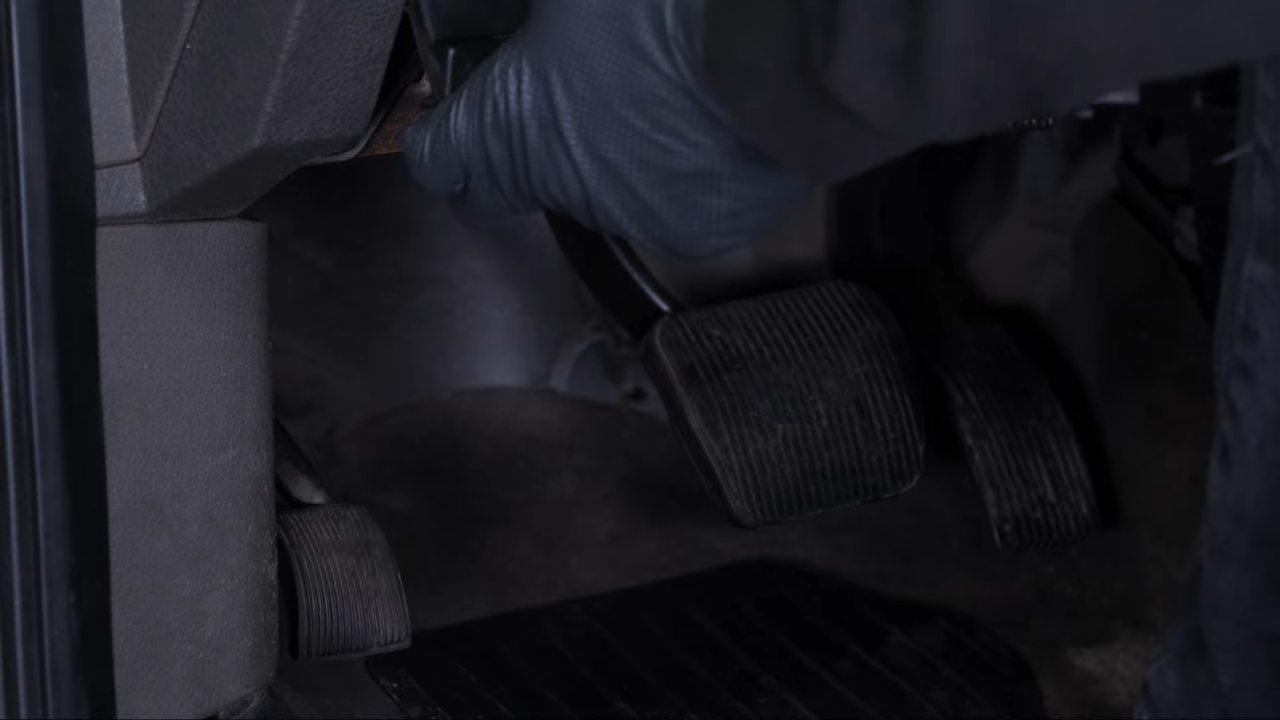
Chapter 3:
Step 4/7
Sometimes this is not enough to remove the disc.
Chapter 3:
Step 5/7
You will have to remove the shutter cover located behind the backing plate with flat screwdriver. You can now reach the adjustment mechanism of the brake shoes, and retract the brake shoes until the disc is free.
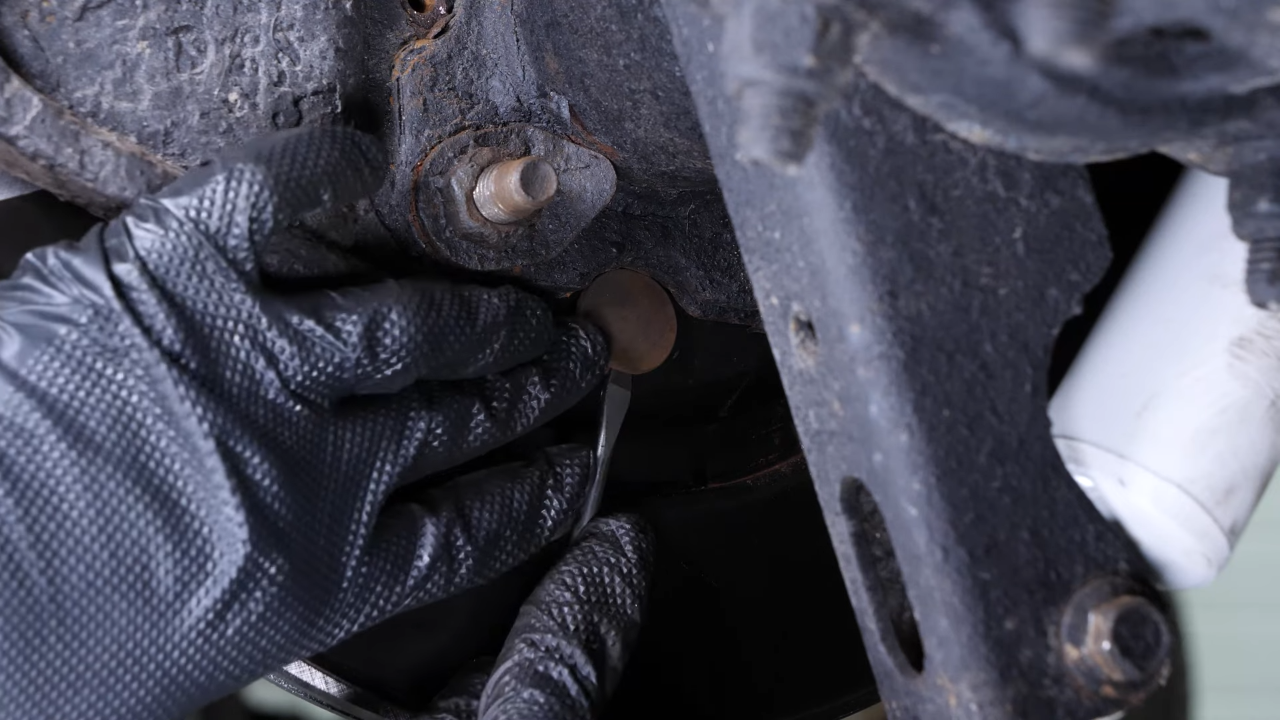

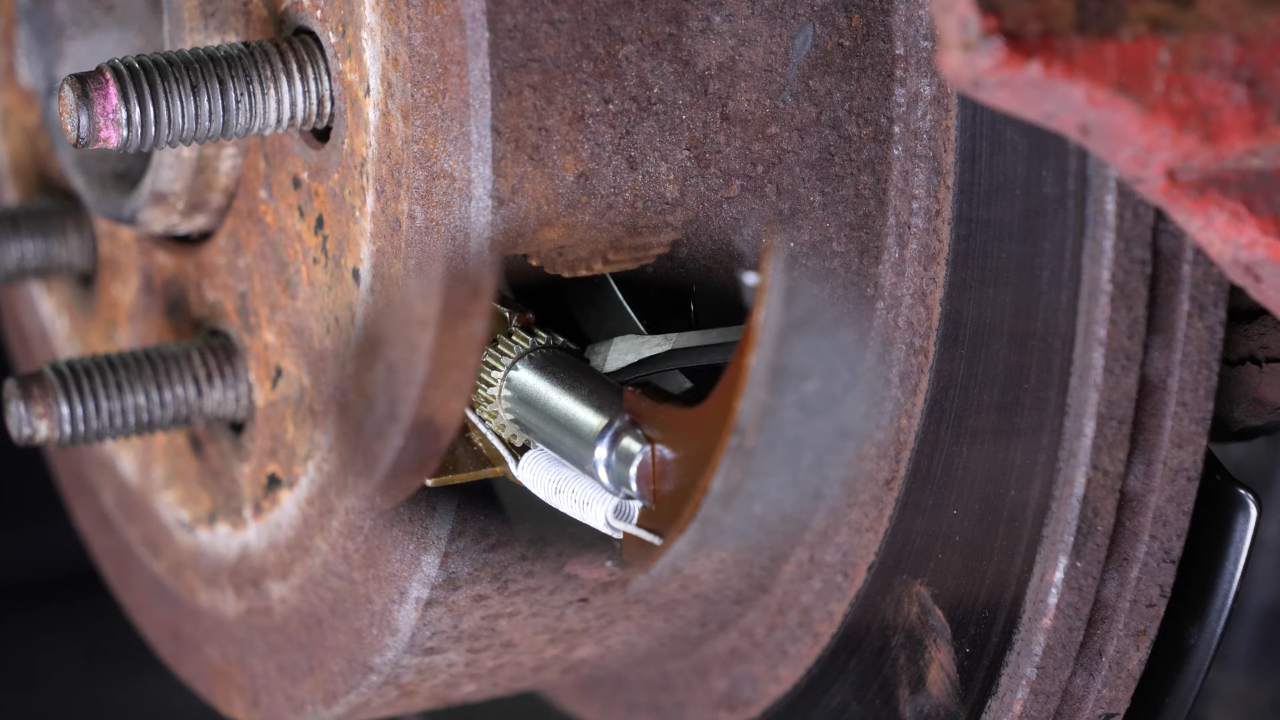
Chapter 3:
Step 6/7
Sometimes the disc may get stuck on the hub, if this happens, use a hammer to remove it.

Chapter 3:
Step 7/7
Finally, remove the disc.

Chapter 4:
Remove the brake shoes
Step 1/9
Now you can see your car’s parking brake shoes.
Chapter 4:
Step 2/9
With a flathead screwdriver, apply pressure to the hold-down clip, then, using a pair of needle-nose pliers, rotate the hold-down pin a quarter turn to release the hold-down clip.
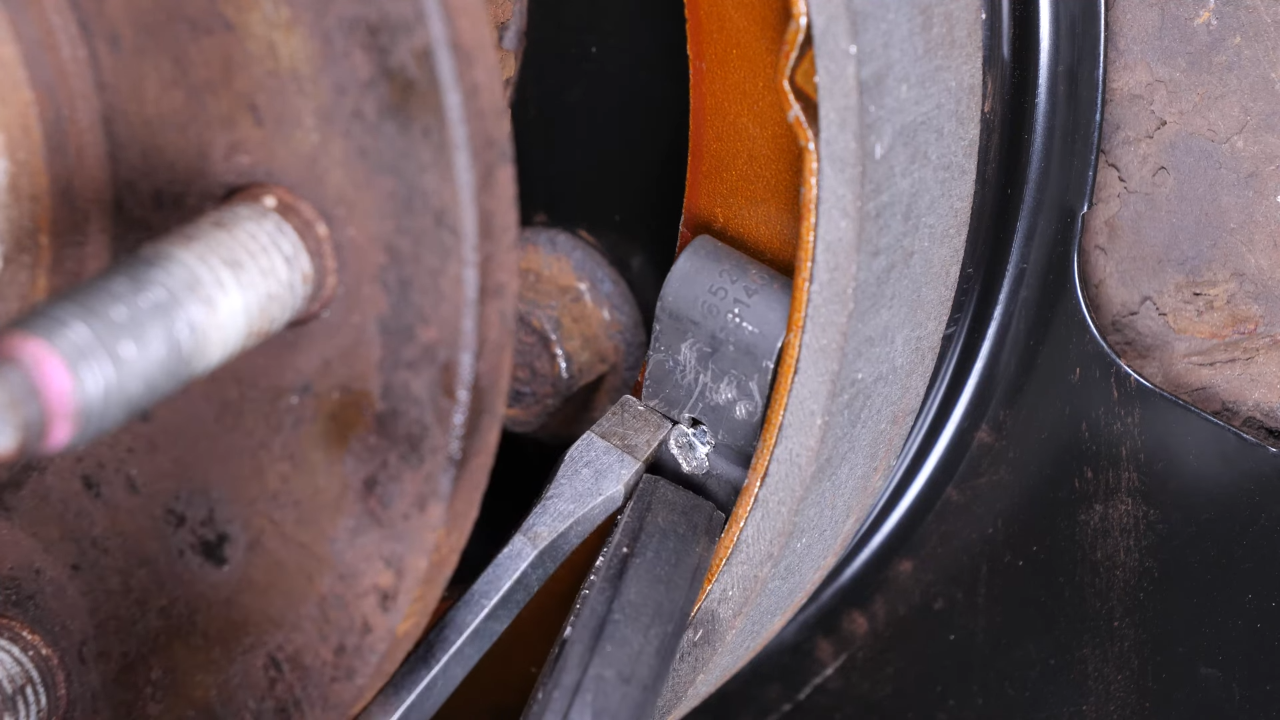
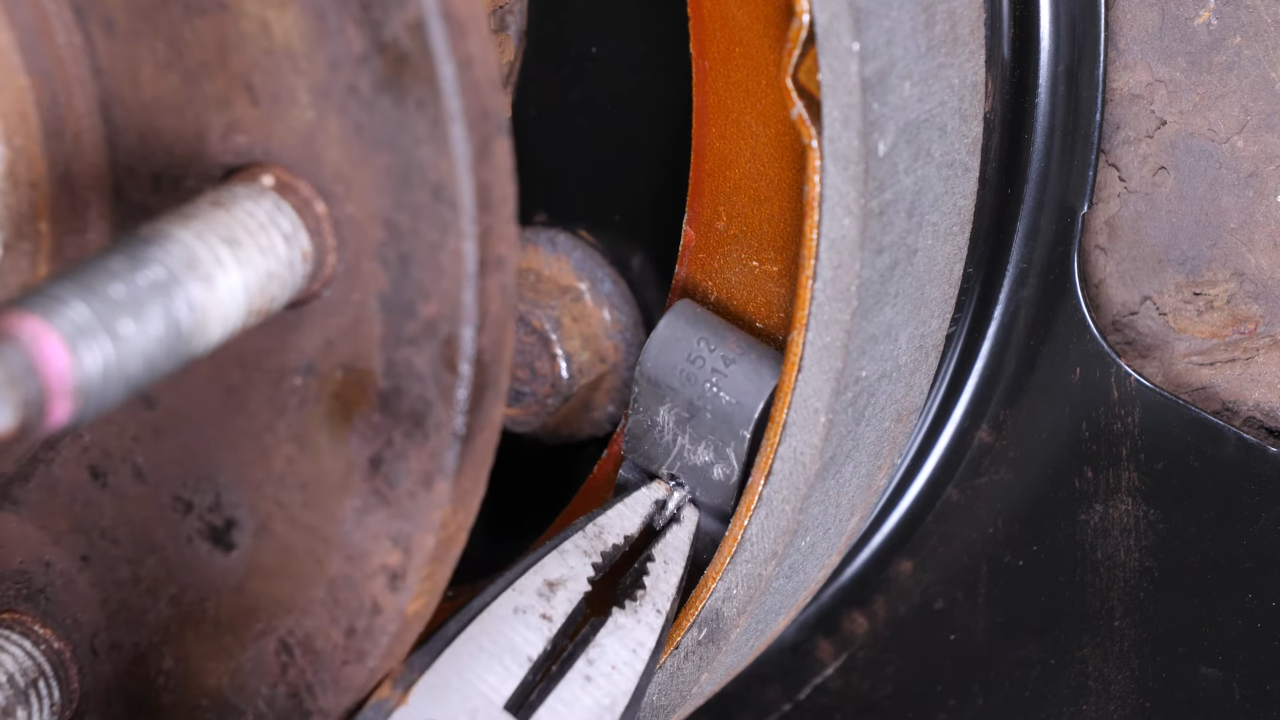
Chapter 4:
Step 3/9
The hold-down pin is fragile and breaks frequently, but that’s nothing to worry about.
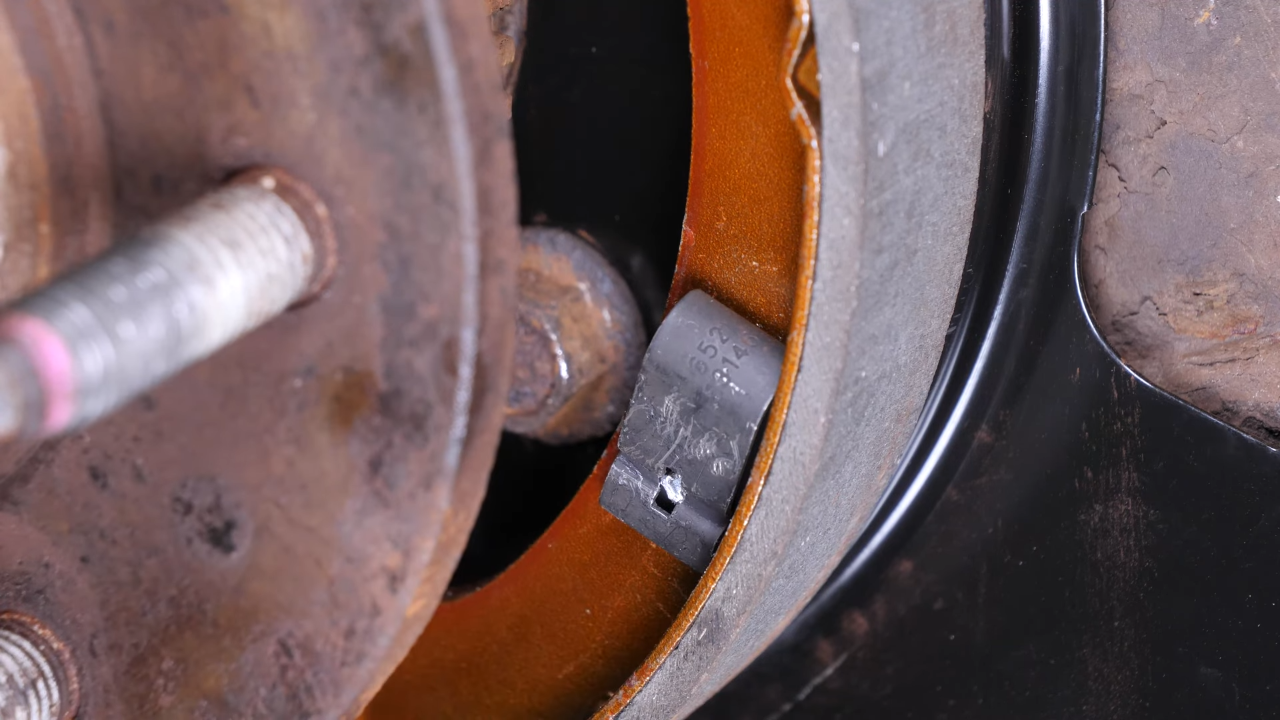
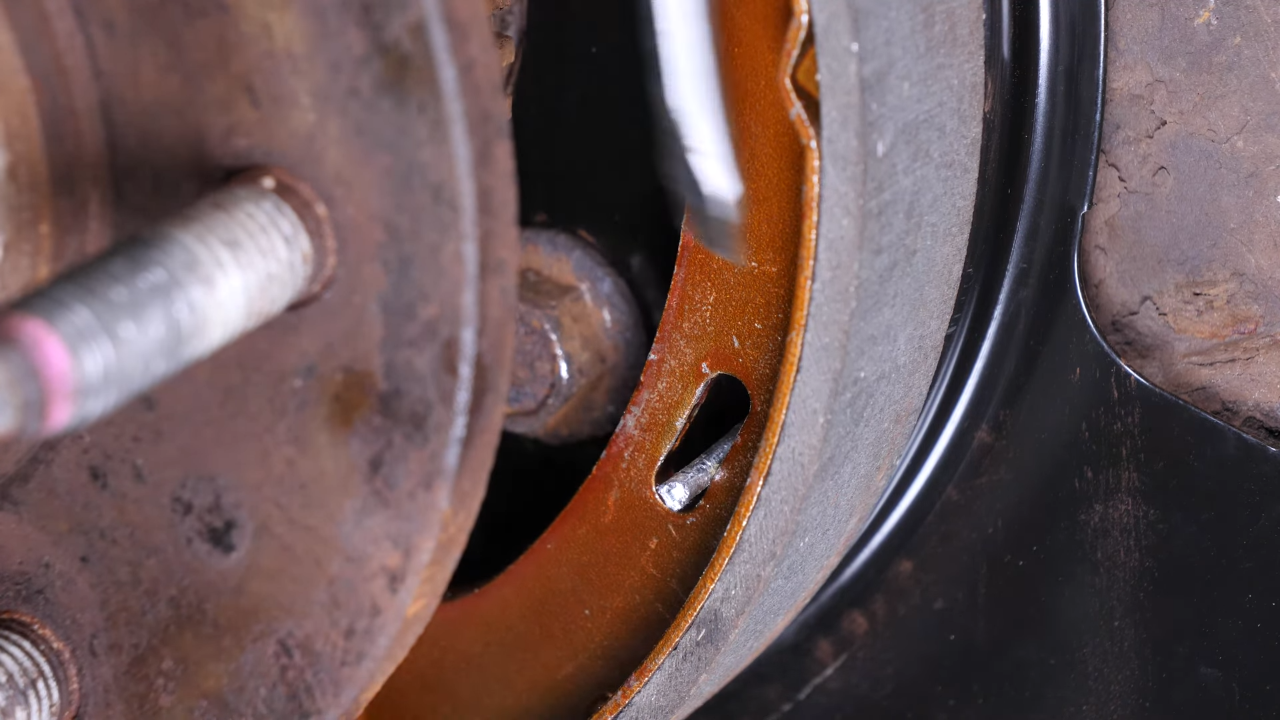
Chapter 4:
Step 4/9
Do the same on the other side.
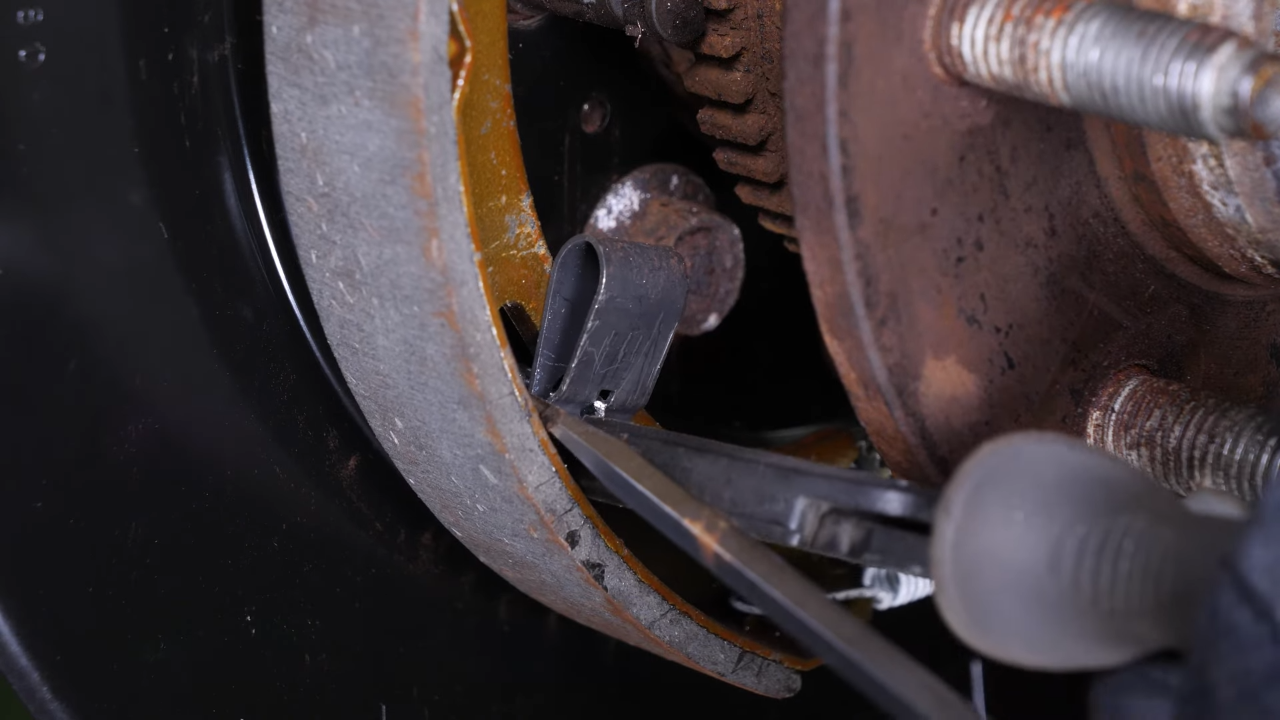
Chapter 4:
Step 5/9
Remove the hold-down pin from the other side of the backing plate.
Chapter 4:
Step 6/9
Using the flathead screwdriver, remove the bottom spring that connects the two brake shoes.
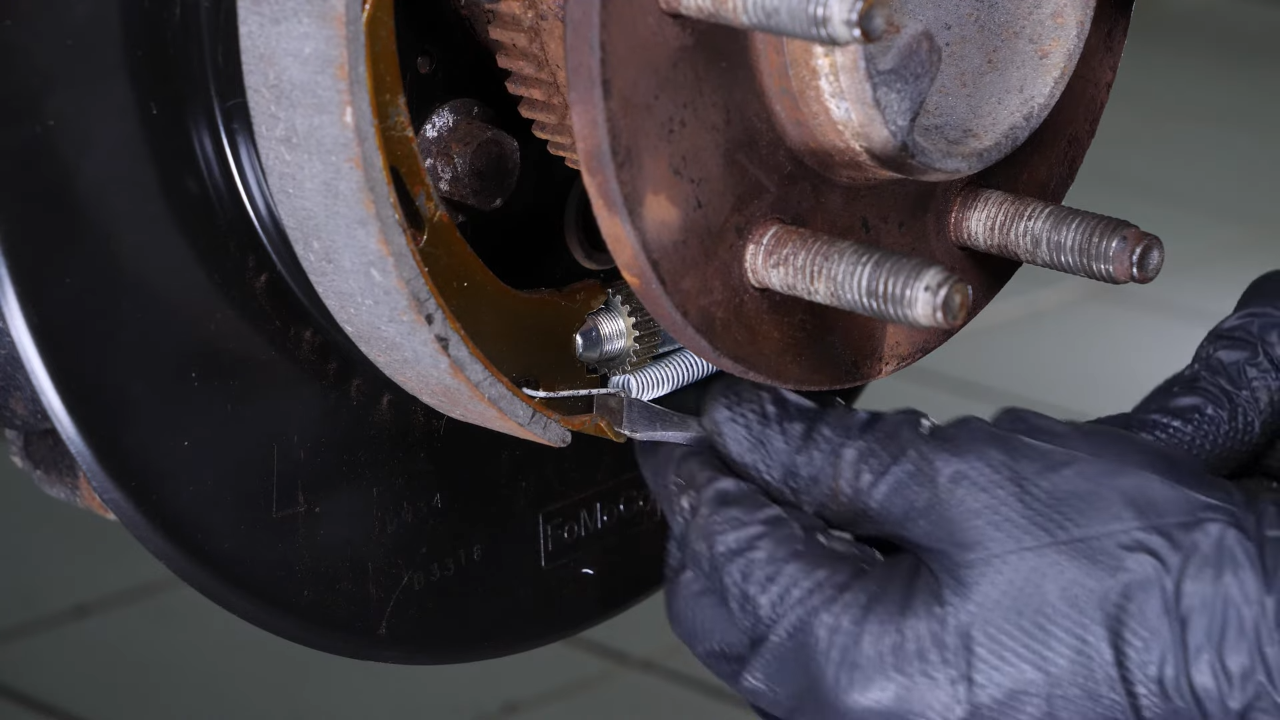
Chapter 4:
Step 7/9
Then, remove the adjuster.
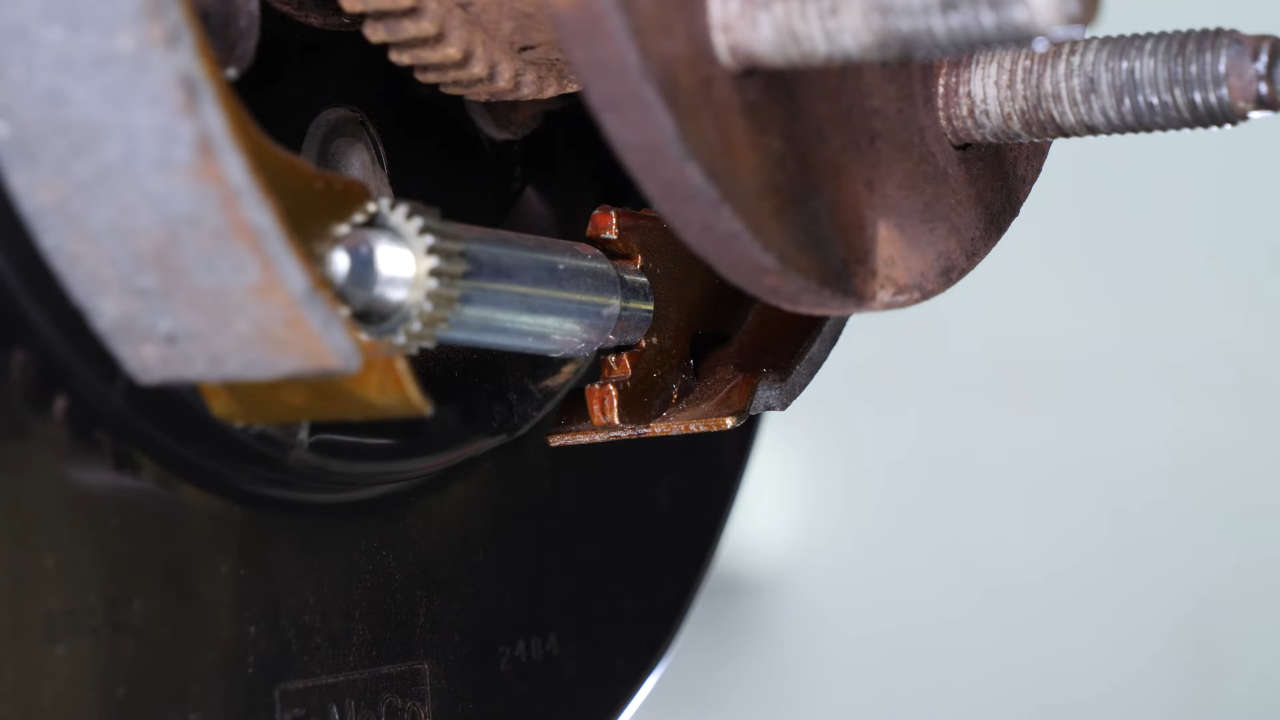
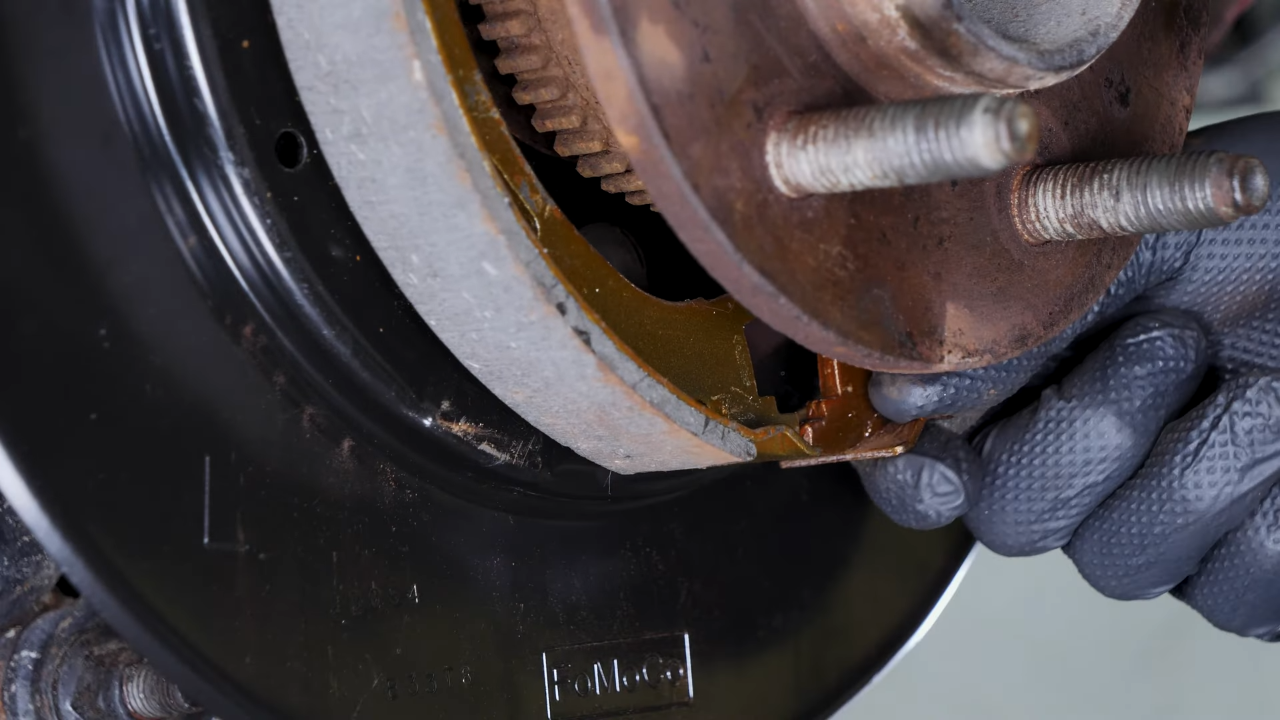
Chapter 4:
Step 8/9
Pull the brake shoes apart to disengage them from the upper spring and the parking brake shoes lever.
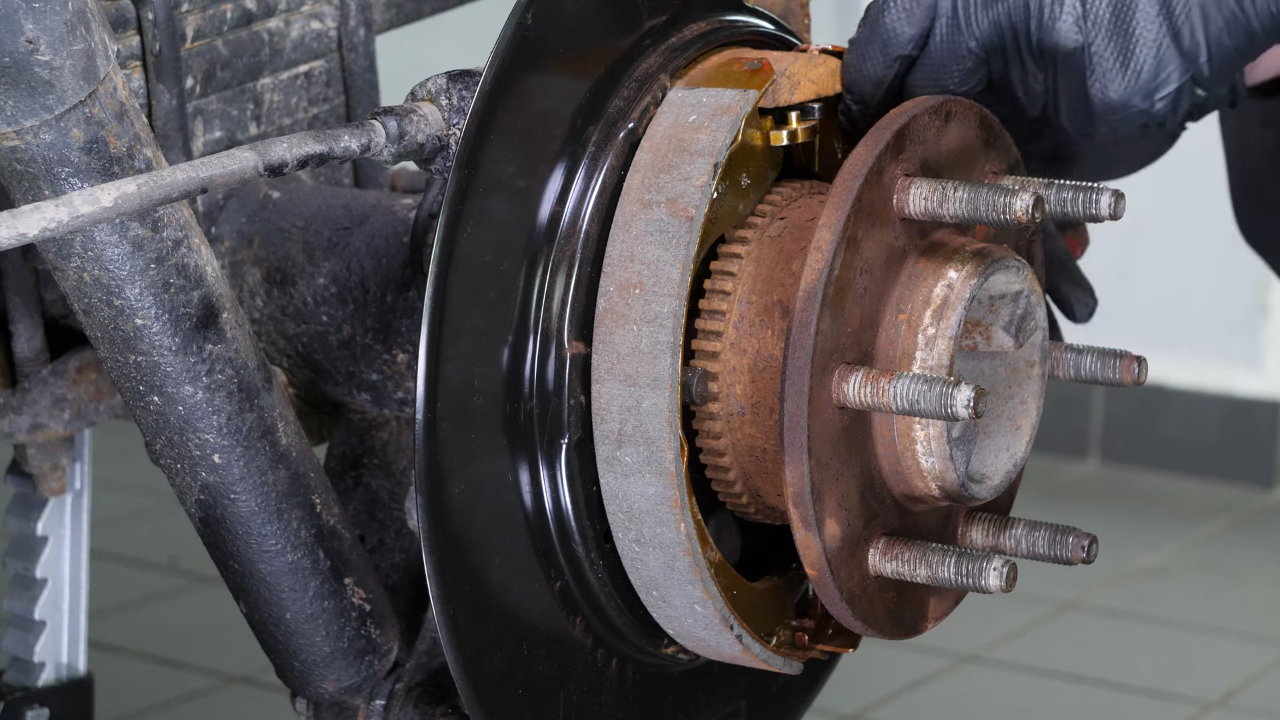
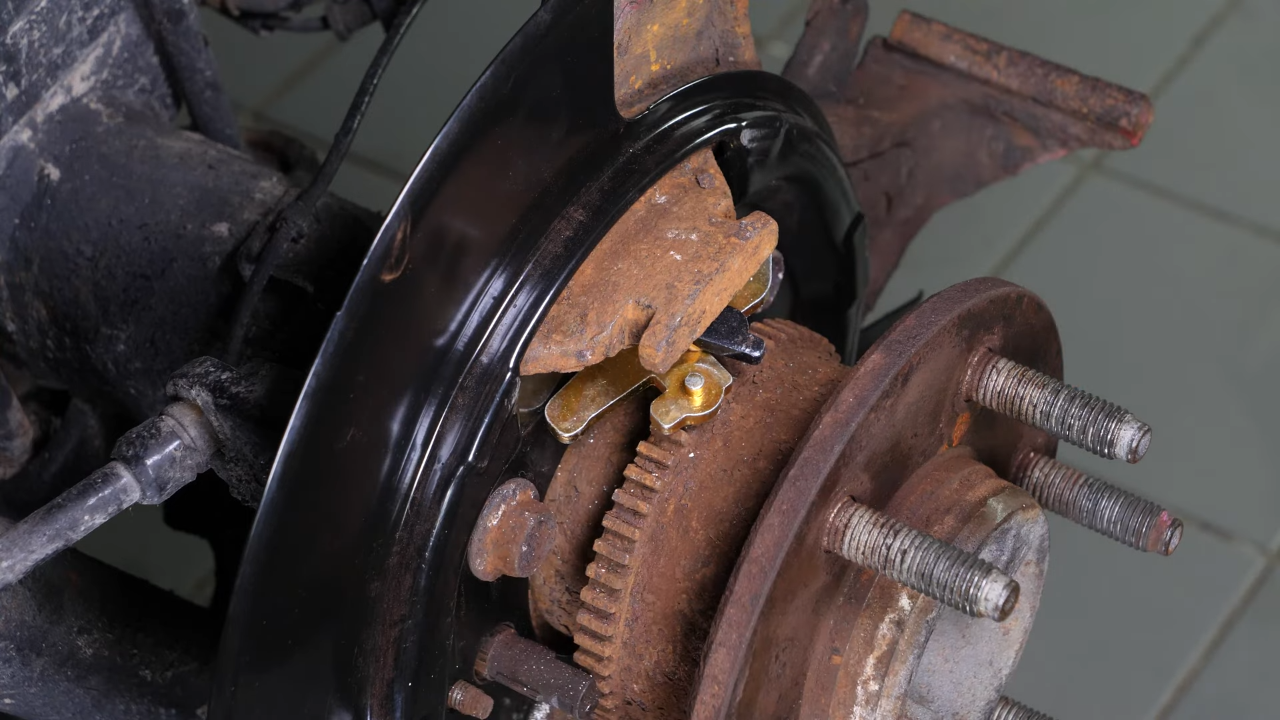
Chapter 4:
Step 9/9
Grease the bearing surfaces of the brake shoes with copper grease.
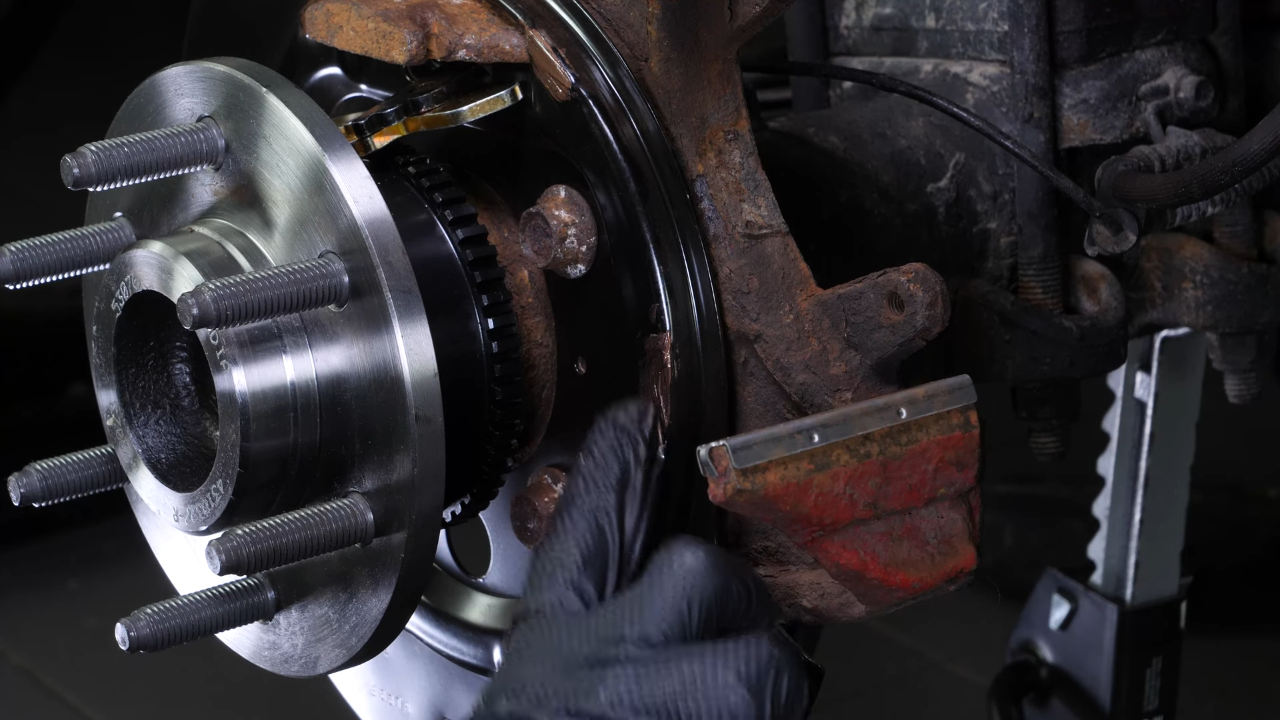
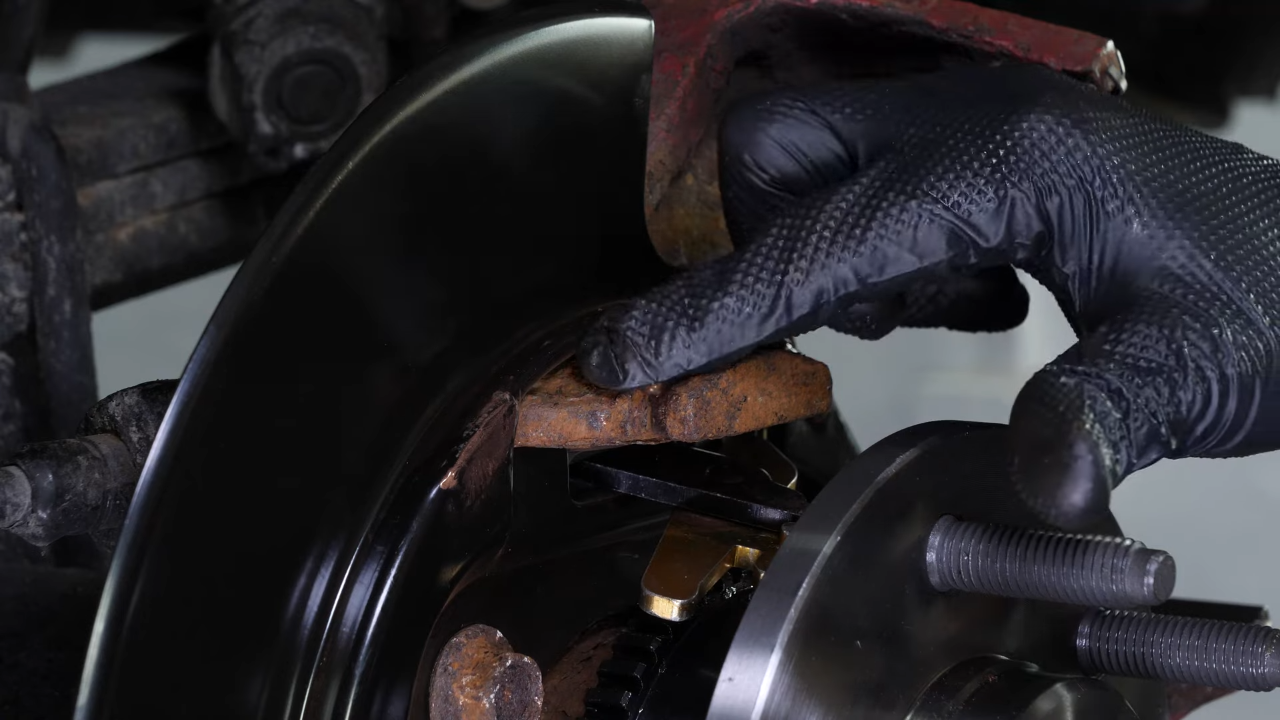
Chapter 6:
Install the brake shoes
Step 1/10
Take the parking brake shoes and the upper spring.

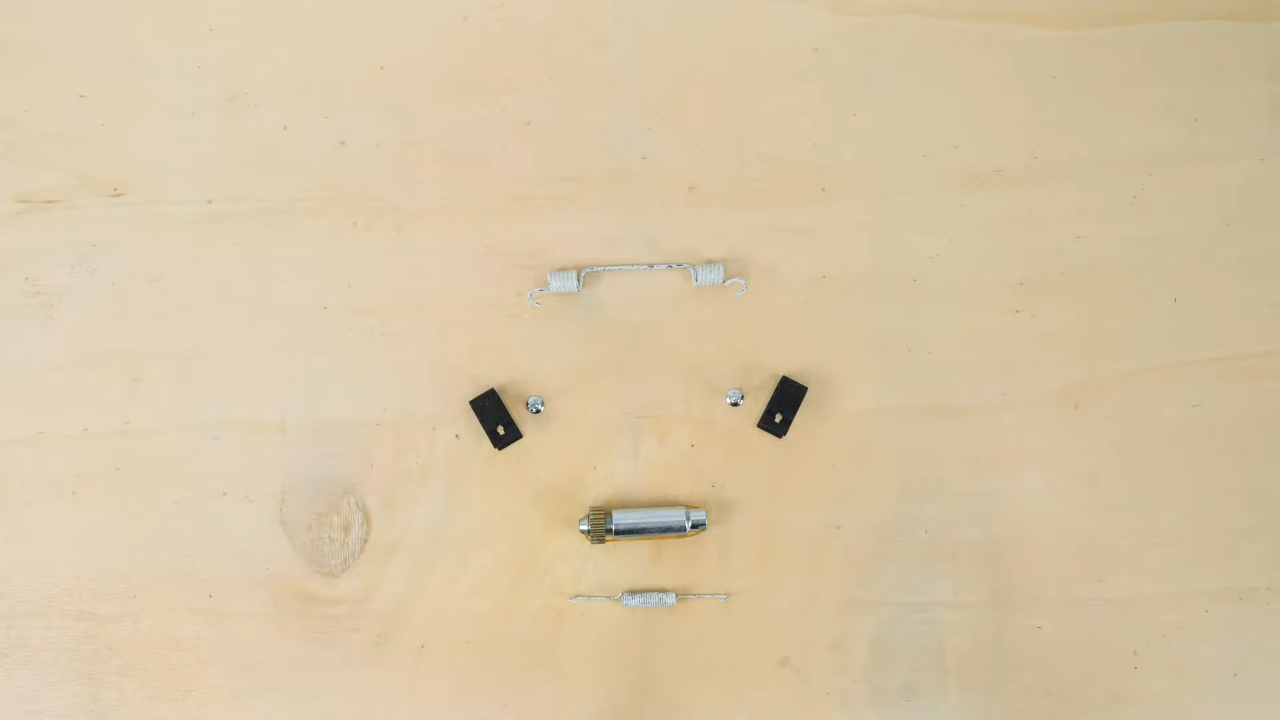

Chapter 6:
Step 2/10
Place the assembly in position on the backing plate, using the upper spring to hold the assembly in position.
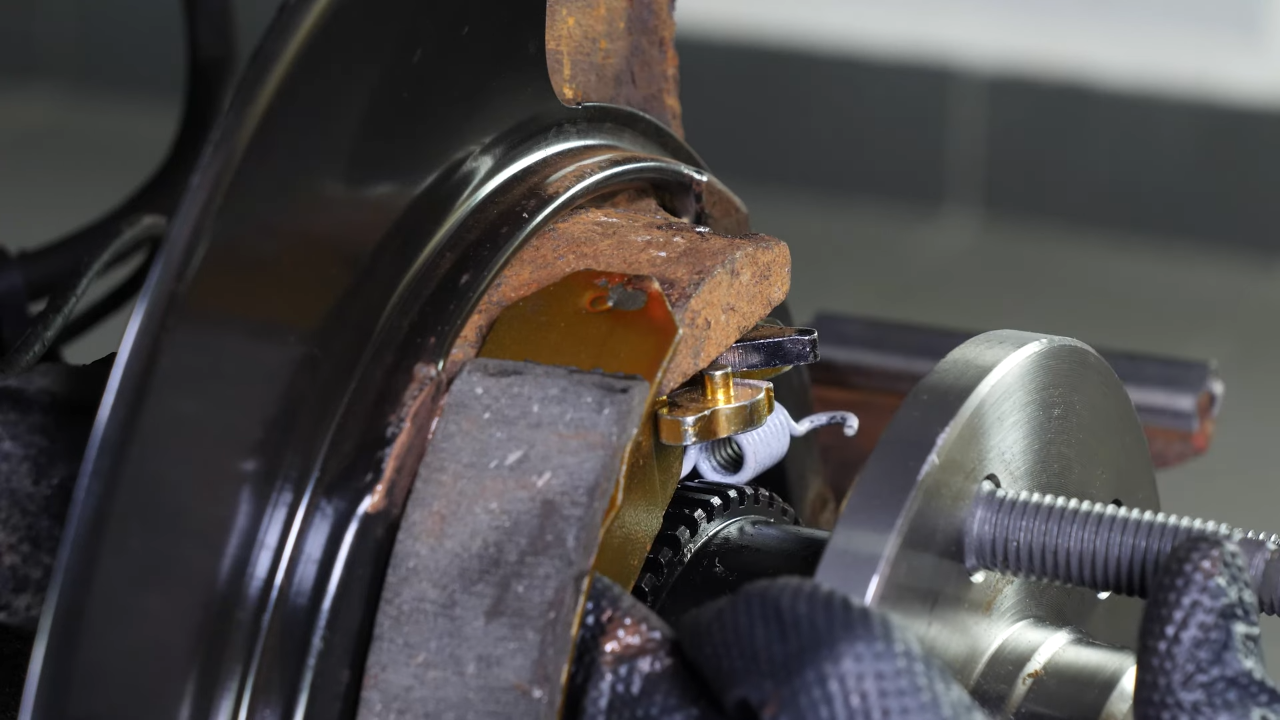
Chapter 6:
Step 3/10
Position the parking brake shoes properly on the parking brake shoes lever.
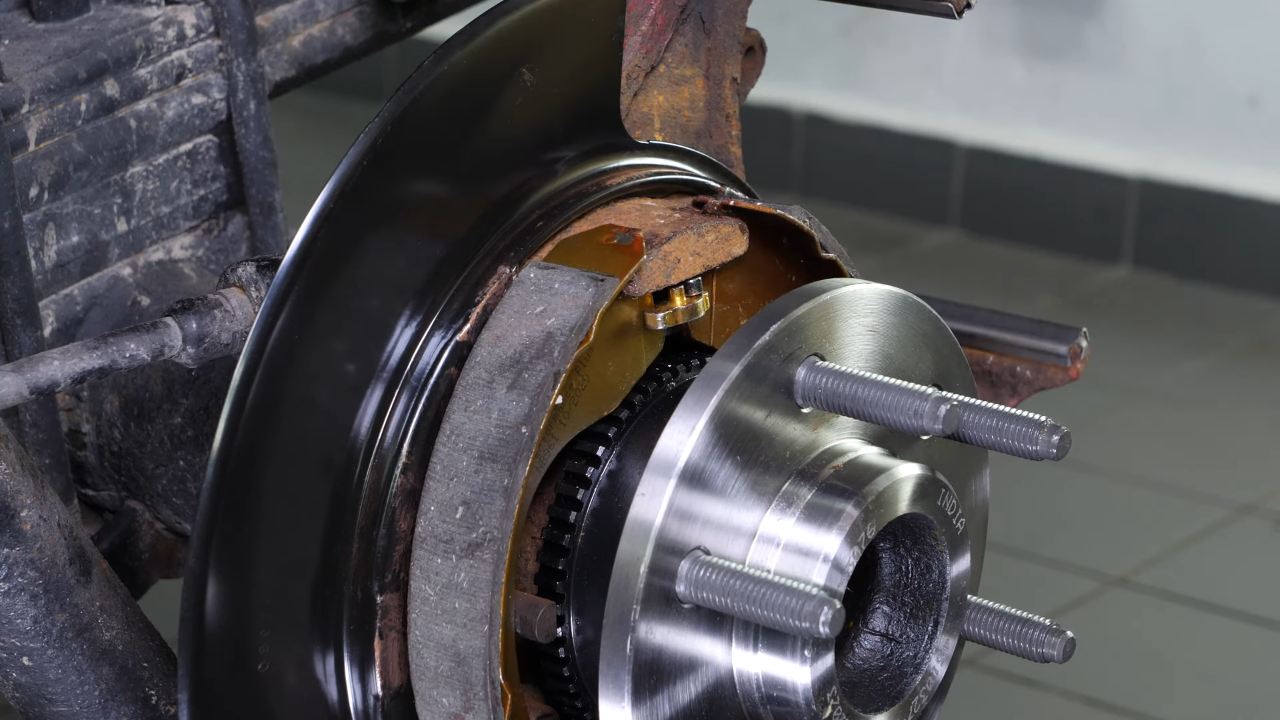
Chapter 6:
Step 4/10
Take the first hold-down pins and hold-down clips. Put them back on one of the brake shoes. Then, lock them in place with the needle-nose pliers.
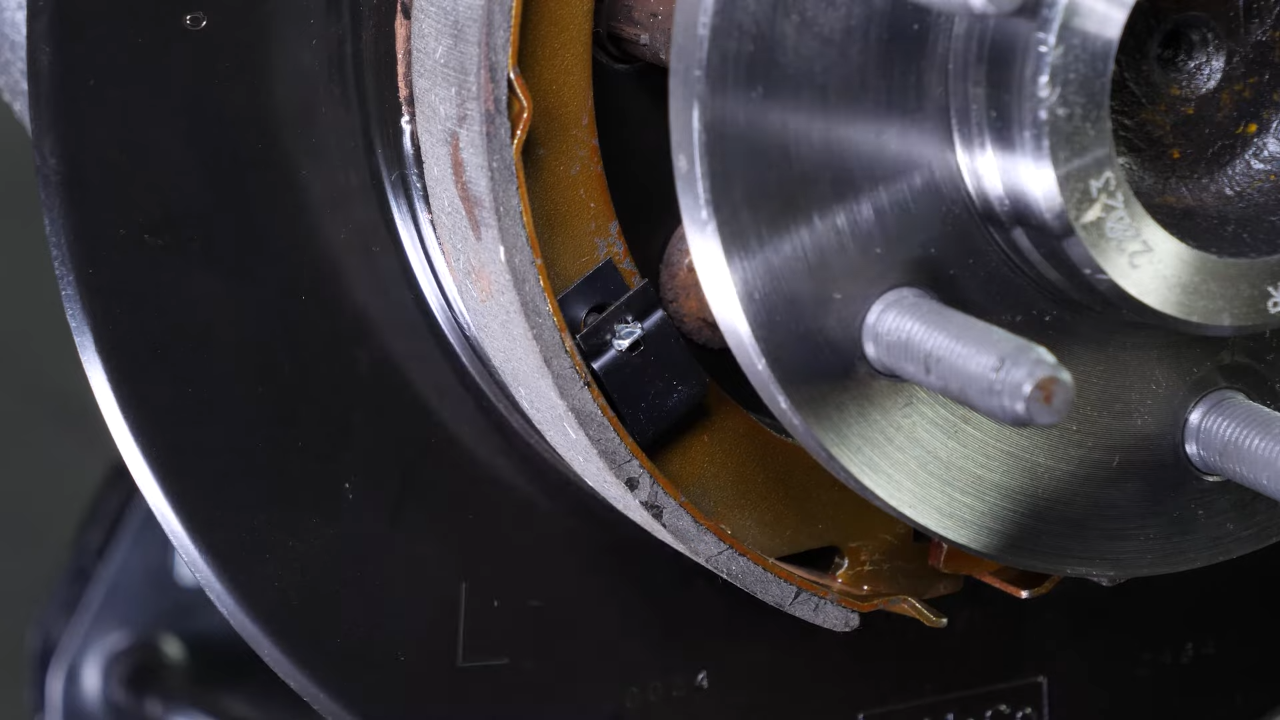
Chapter 6:
Step 5/10
Take the new adjuster. Apply grease to the threads to prevent corrosion over time.

Chapter 6:
Step 6/10
Insert the cylinder, then reposition the adjuster back on the brake shoes.
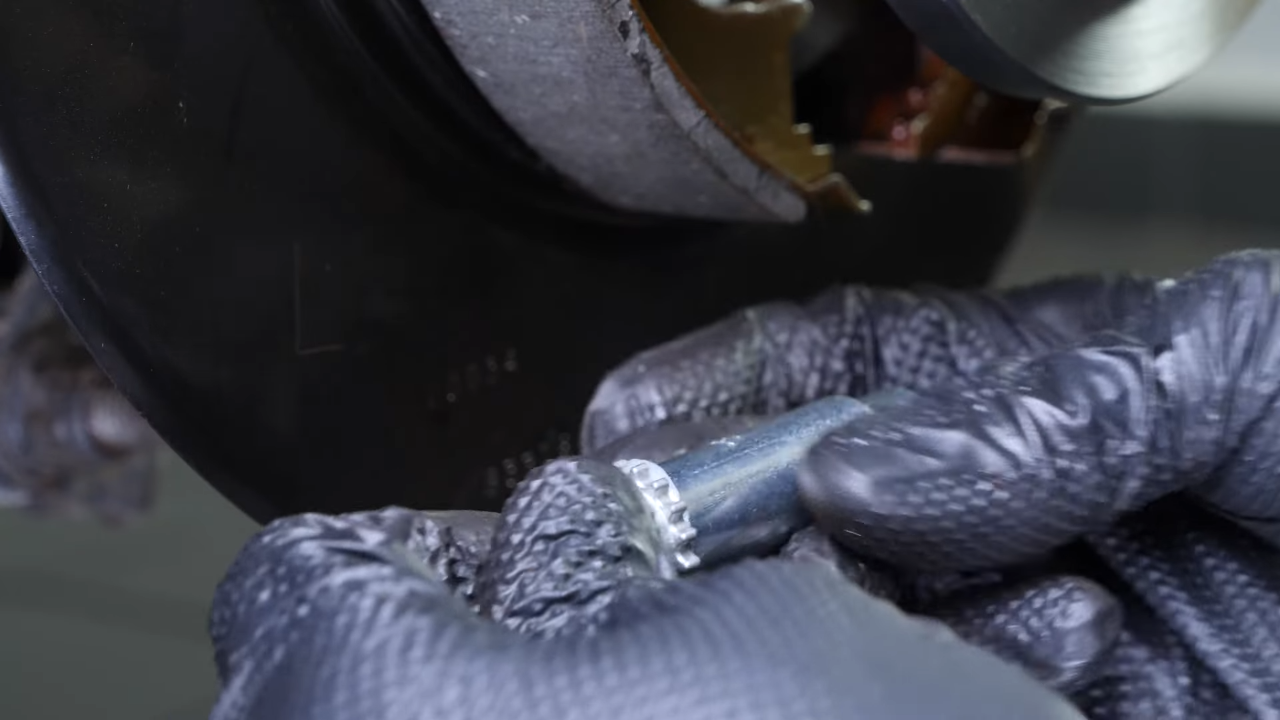
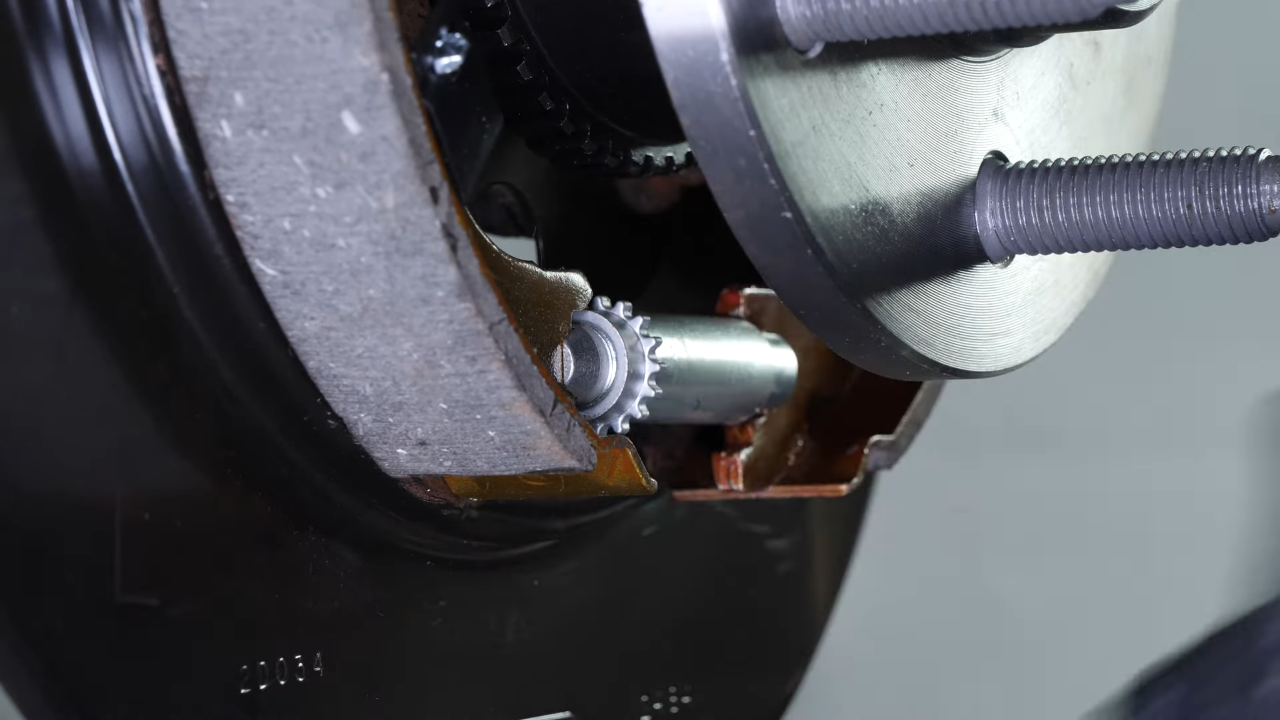
Chapter 6:
Step 7/10
Now you can put the second hold-down pins and hold-down clips back in place.

Chapter 6:
Step 8/10
Using the flathead screwdriver, put the bottom spring in place.

Chapter 6:
Step 9/10
Clean the hub with a wire brush.
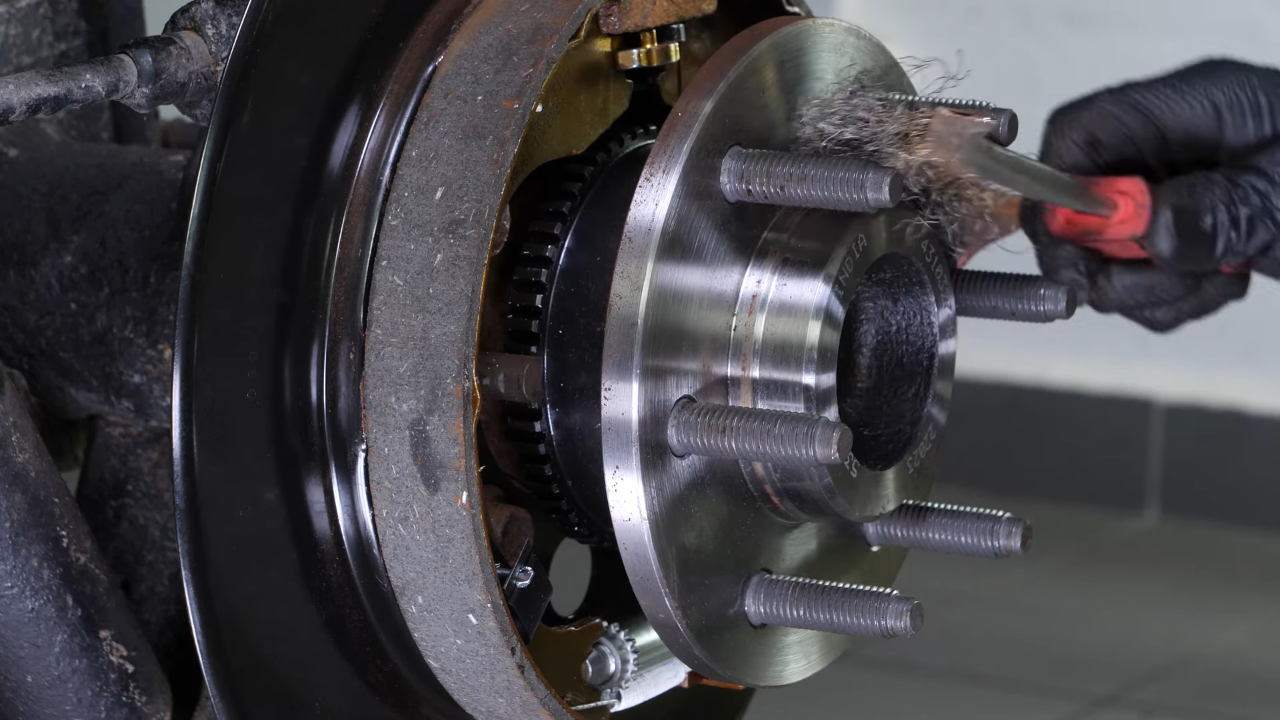
Chapter 6:
Step 10/10
Also clean the surface of contact between the brake shoes and the disc.
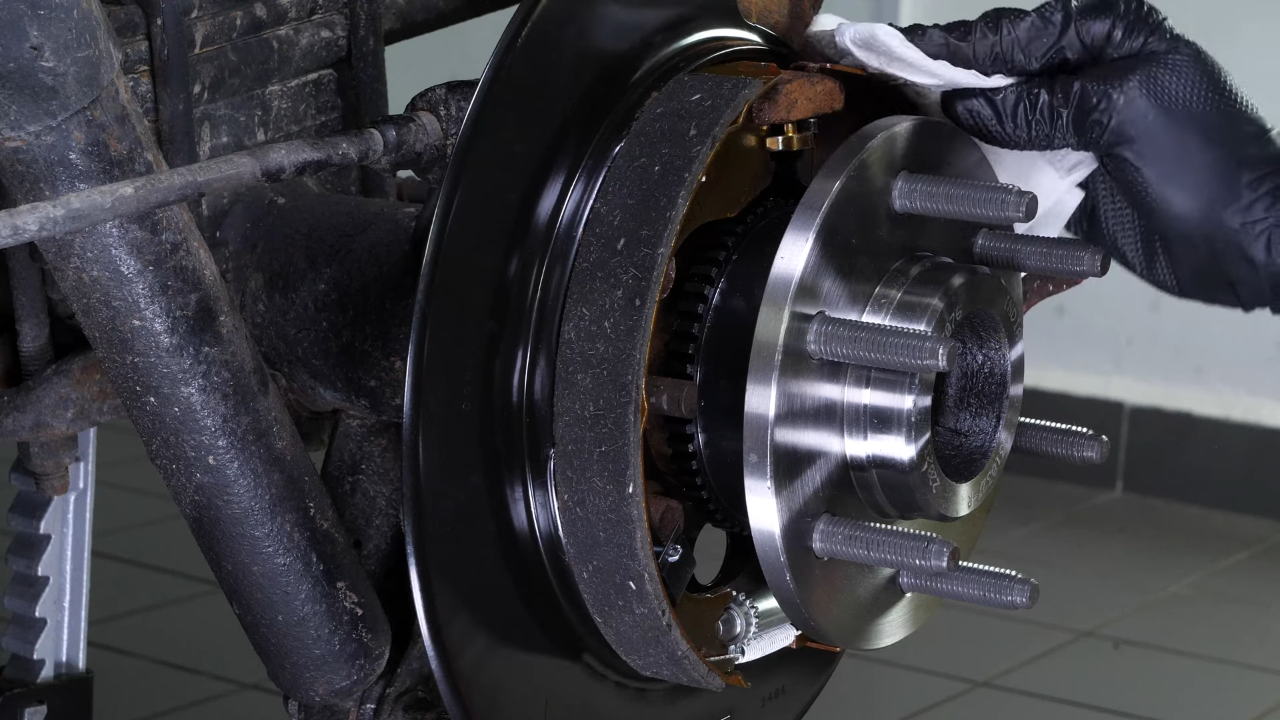
Chapter 7:
Set the new drum brake up
Step 1/5
Now you can put the rear brake system back in place. To do so, we recommend watching our video : “How to replace the Rear Brakes 09-14 Ford F150”

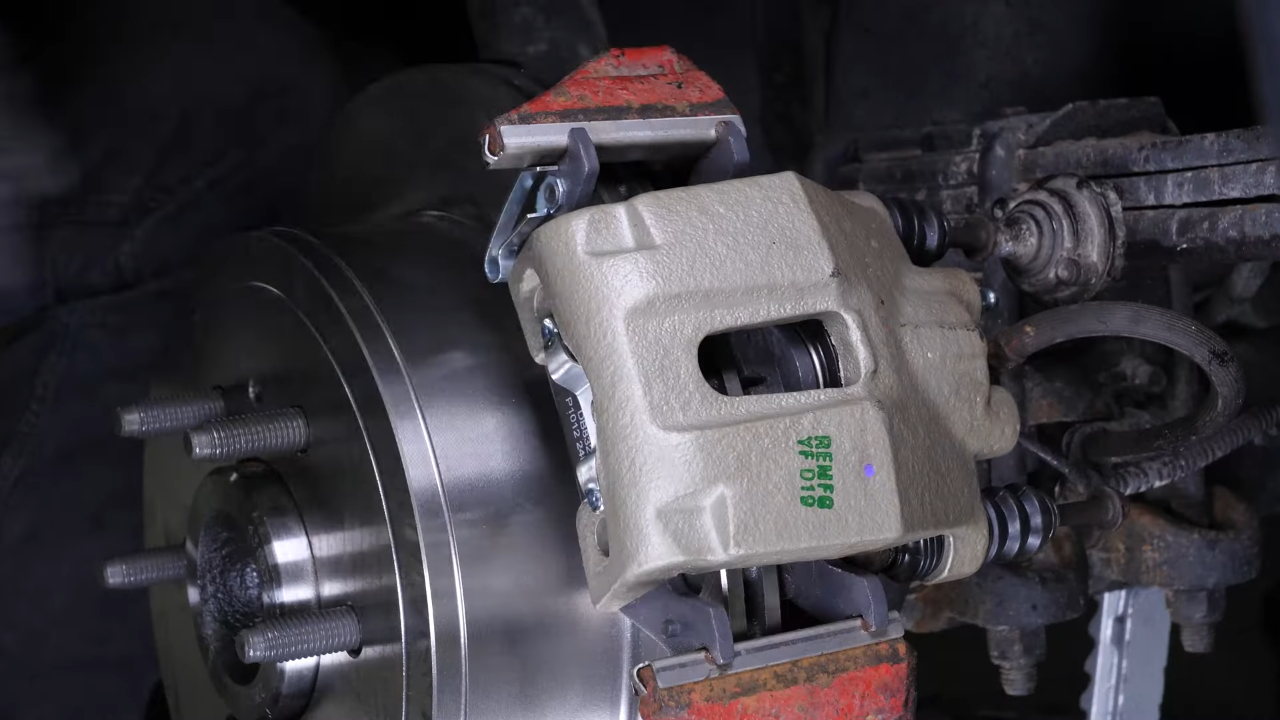
Chapter 7:
Step 2/5
Then, you will be able to put the wheels back on your vehicle.
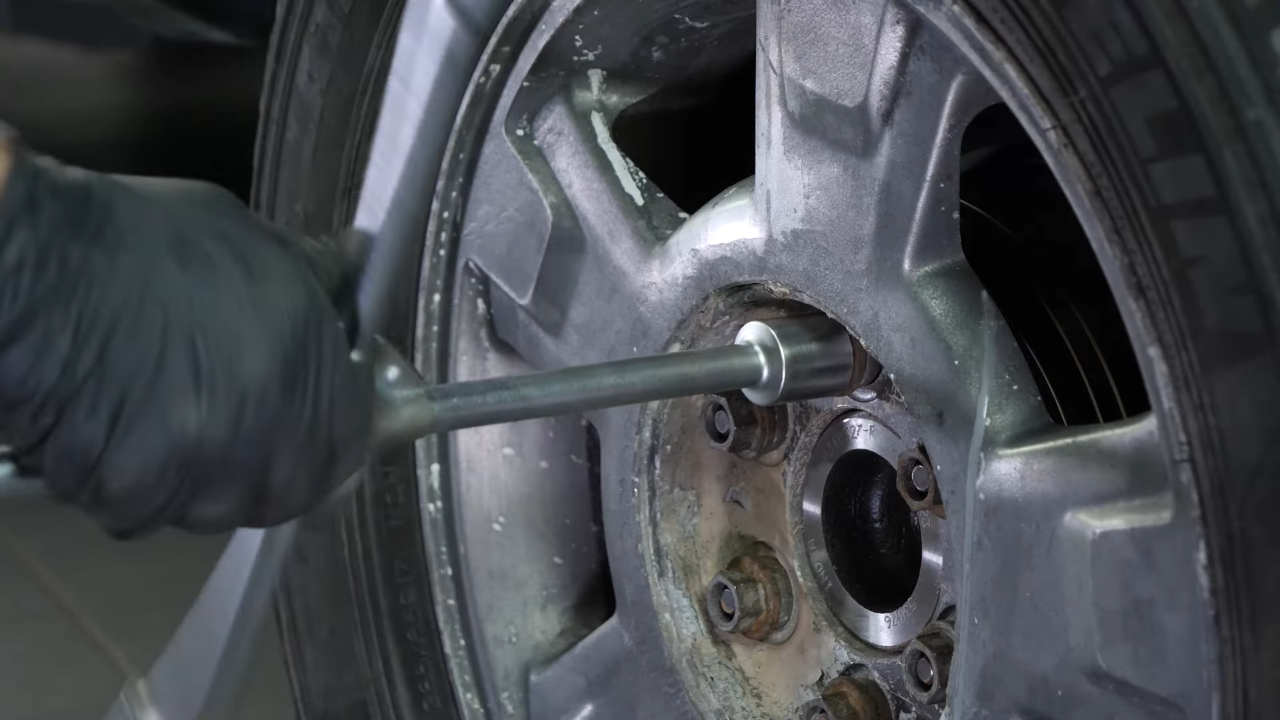
Chapter 7:
Step 3/5
Now you need to readjust the brake shoes.

Chapter 7:
Step 4/5
Tighten the adjustment mechanism until there is a slight friction between the brake shoes and the disc, which means that the brake shoes are perfectly spaced for your hand brake to work properly.
Chapter 7:
Step 5/5
Put the shutter cover back on.
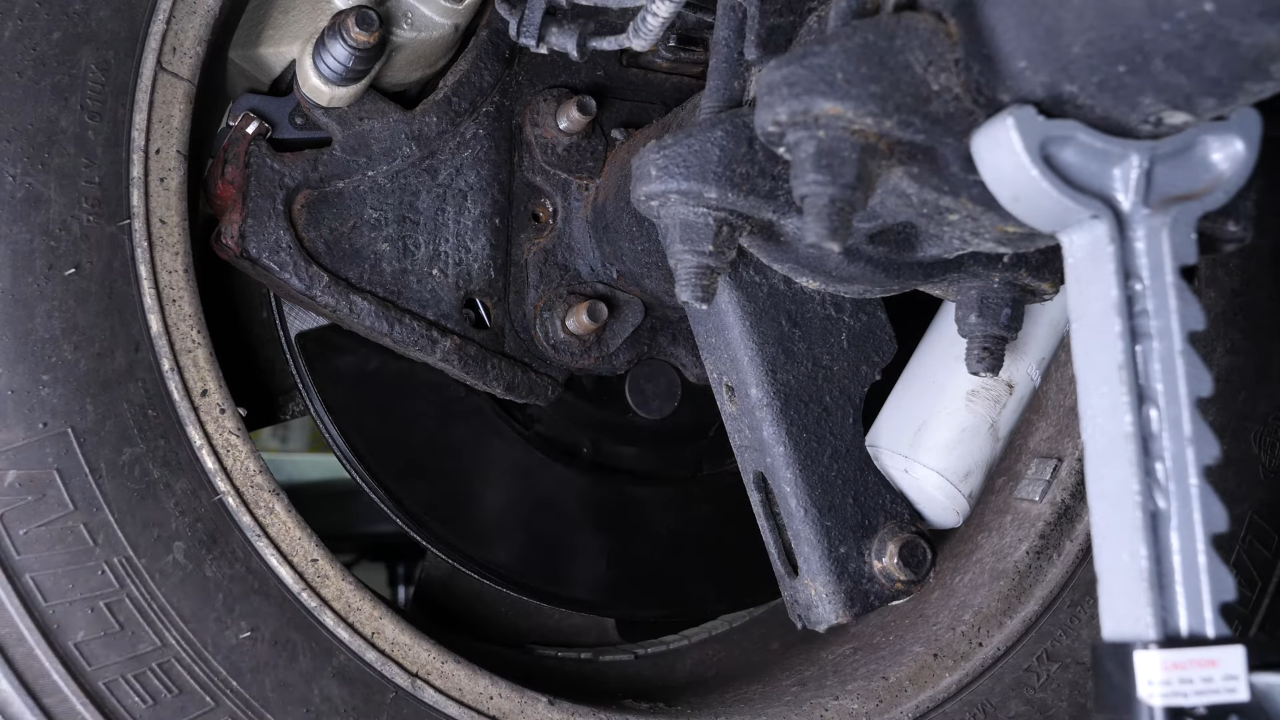
Chapter 8:
Put the vehicle back on the ground
Step 1/2
Put the car back on the ground and block the wheels properly.
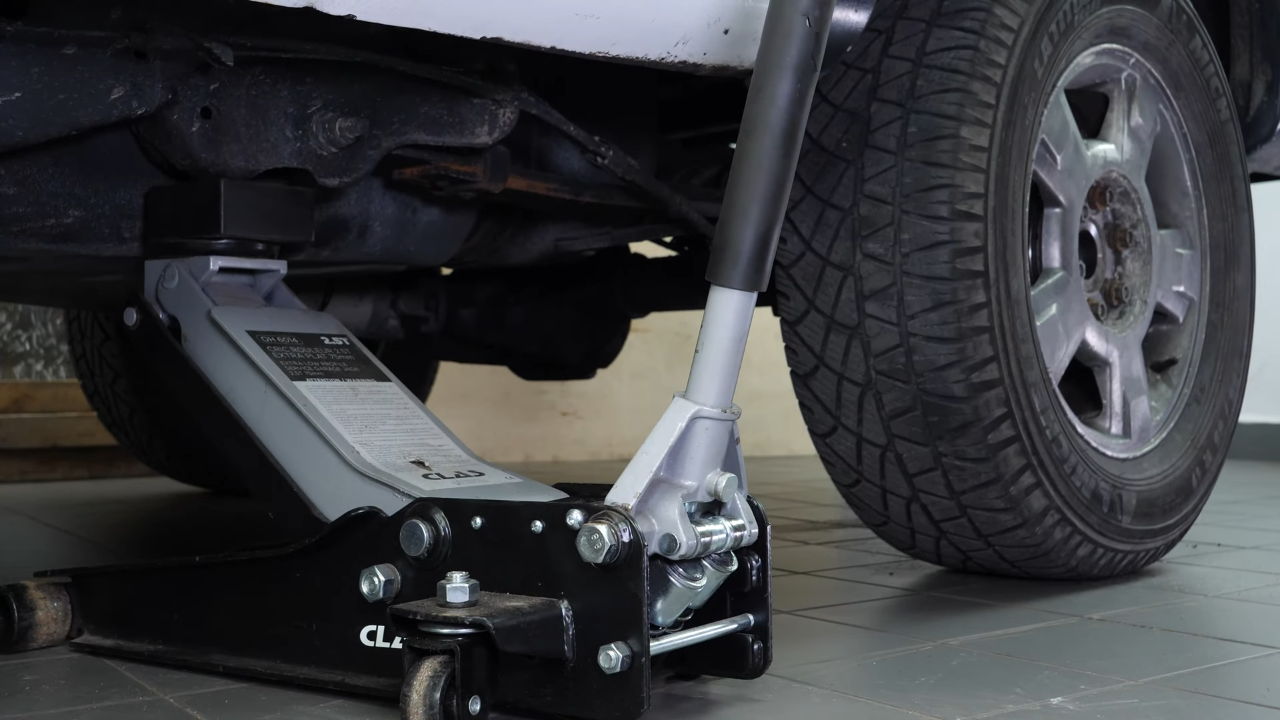

Chapter 8:
Step 2/2
Don’t forget to screw the brake fluid cap back on before starting the car.

Chapter 9:
Tips
Step 1/3
Attention! Before using your vehicle again, start your car, and pump the brake pedal a few times to push the brake pads together again.
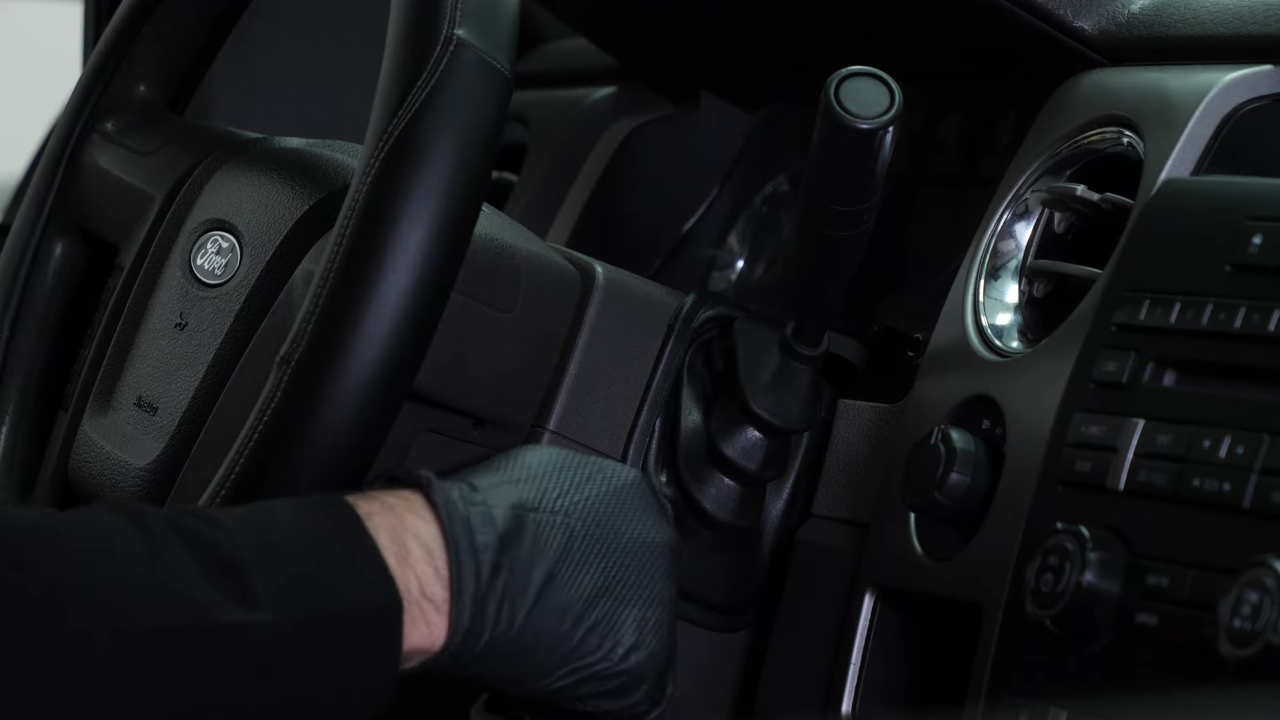
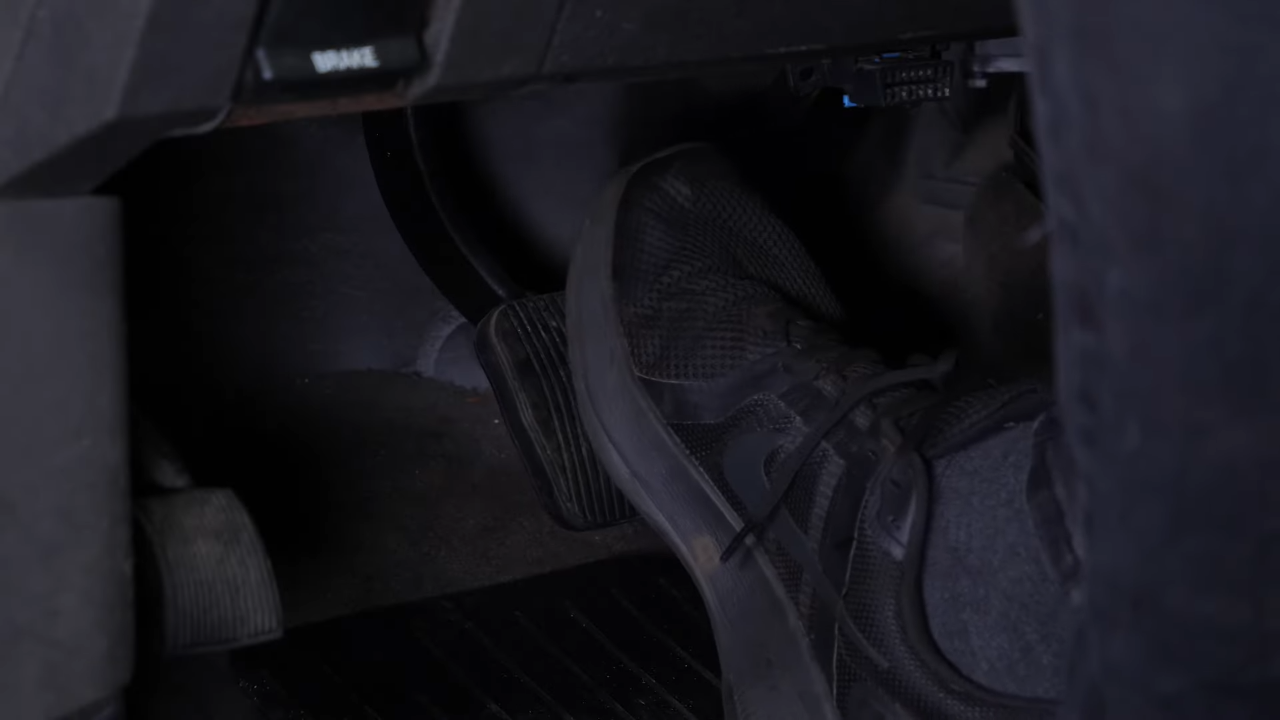
Chapter 9:
Step 2/3
Try to drive smoothly and avoid sudden braking for the first 30 miles or so, to avoid glazing the new pads.
Chapter 9:
Step 3/3
Operation complete.